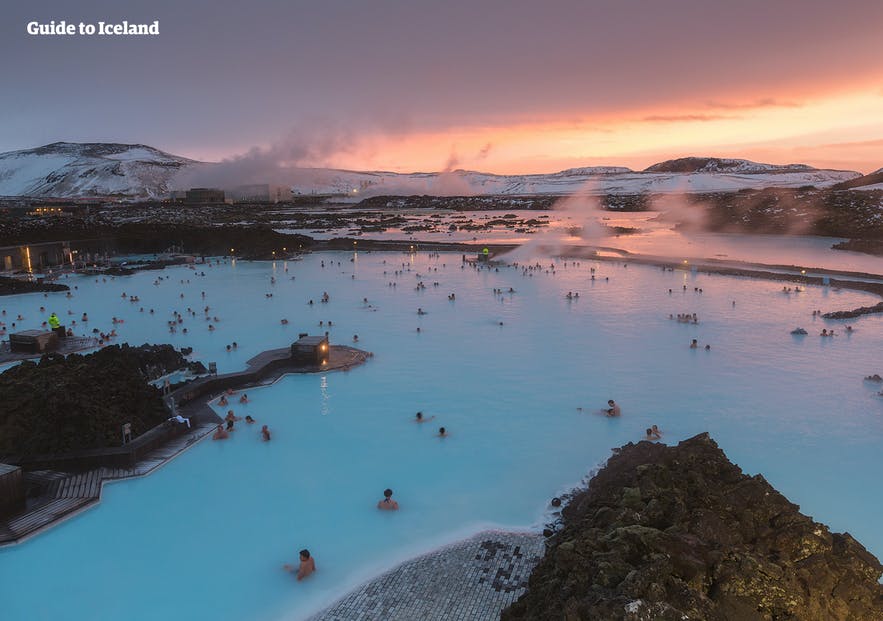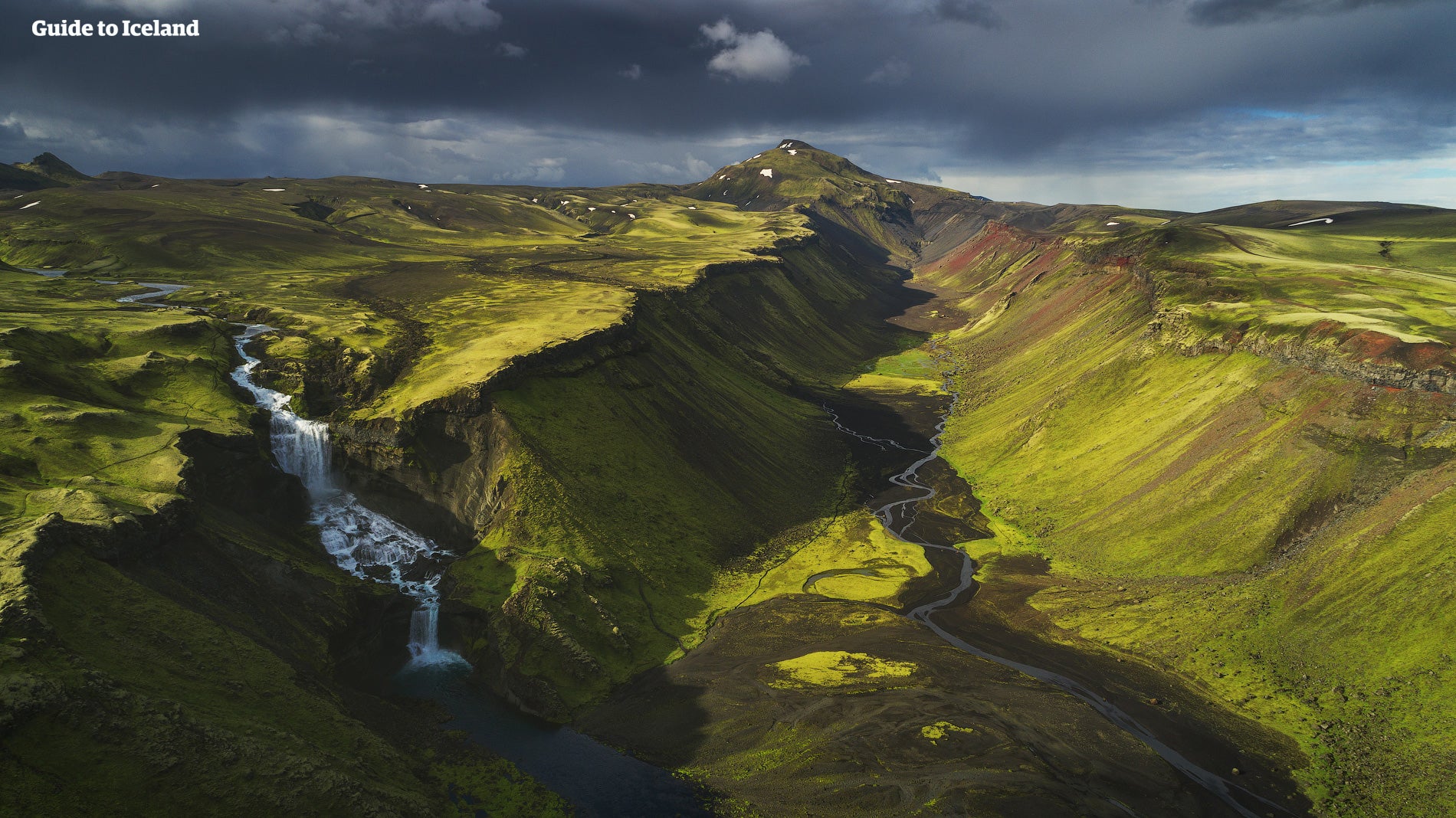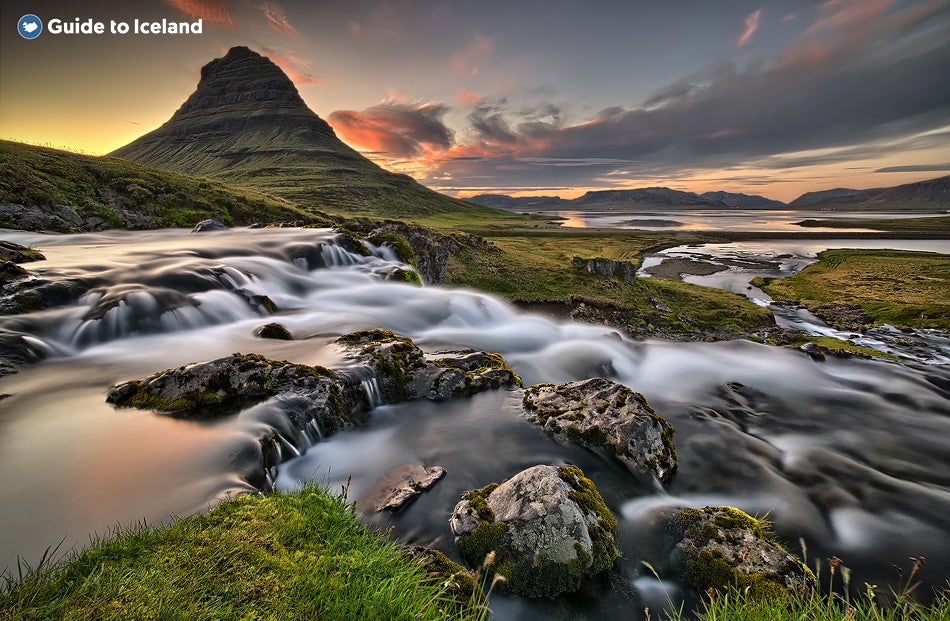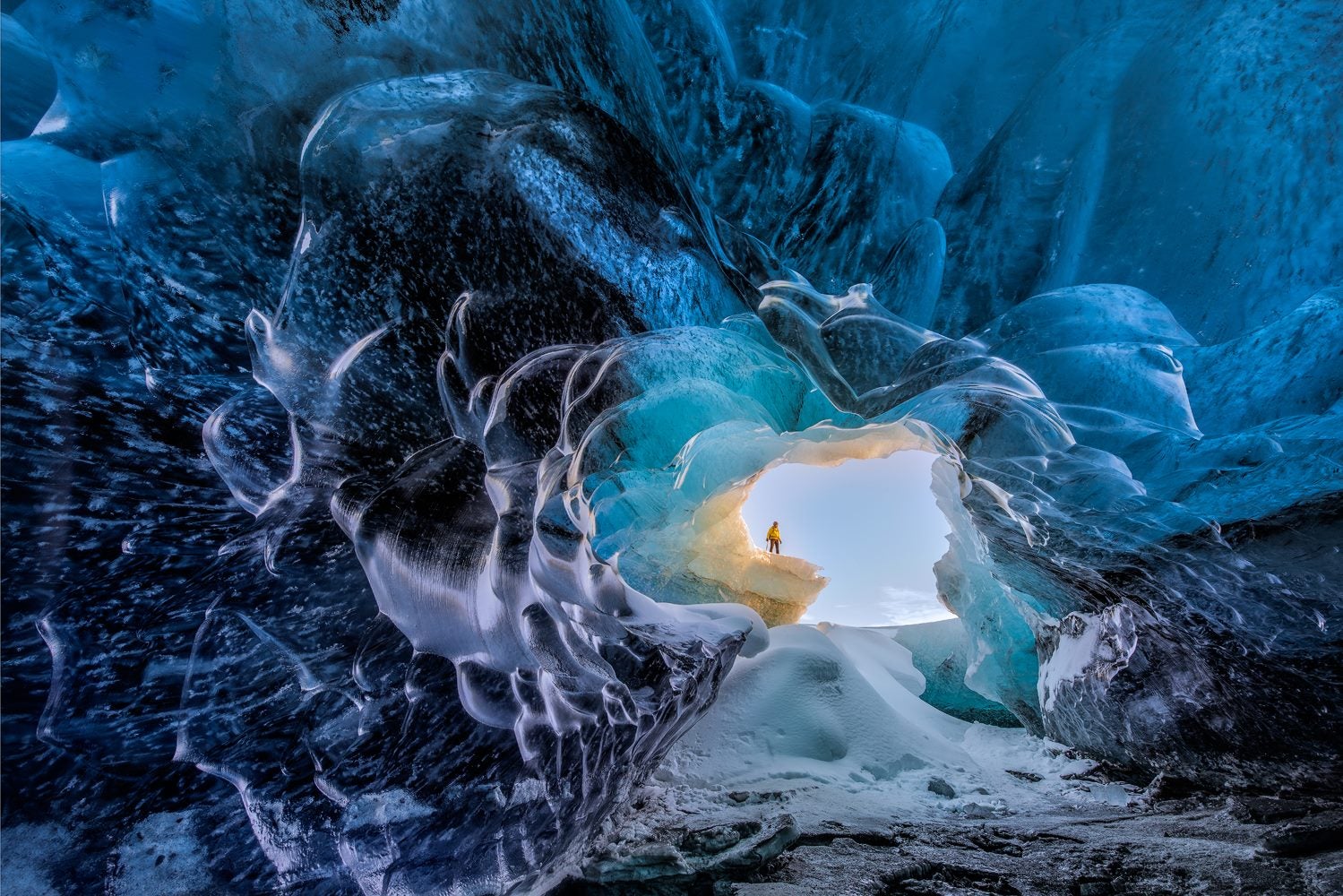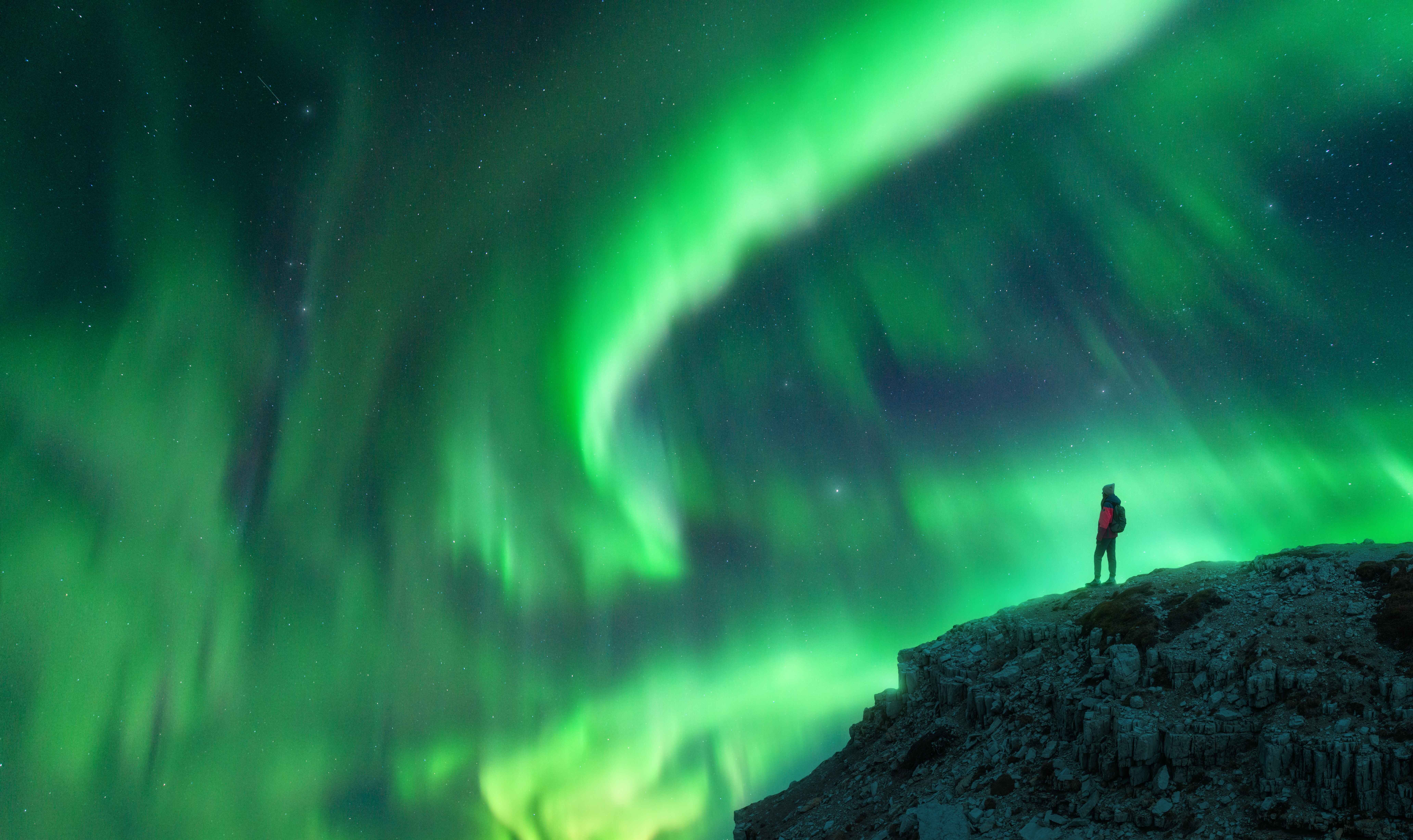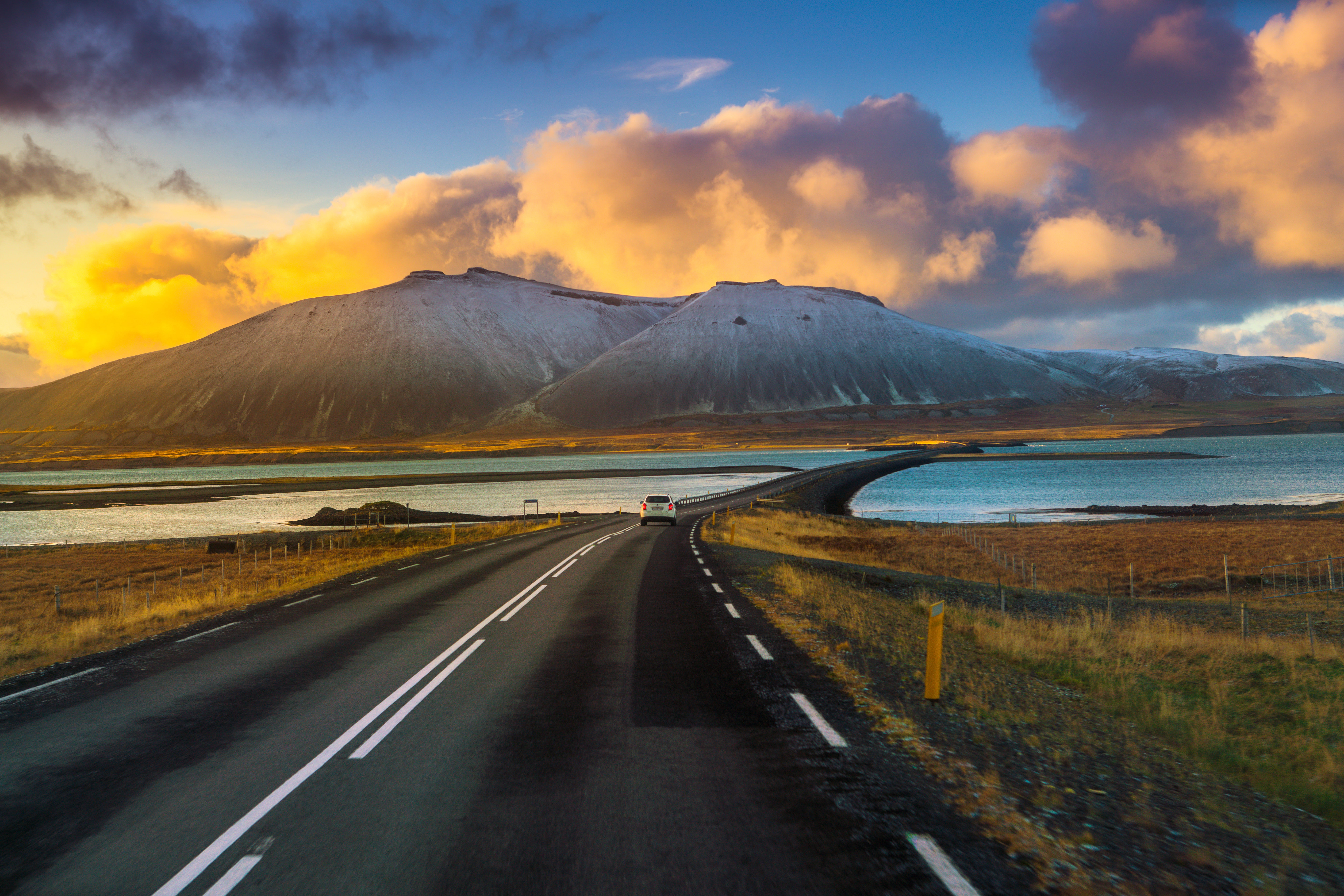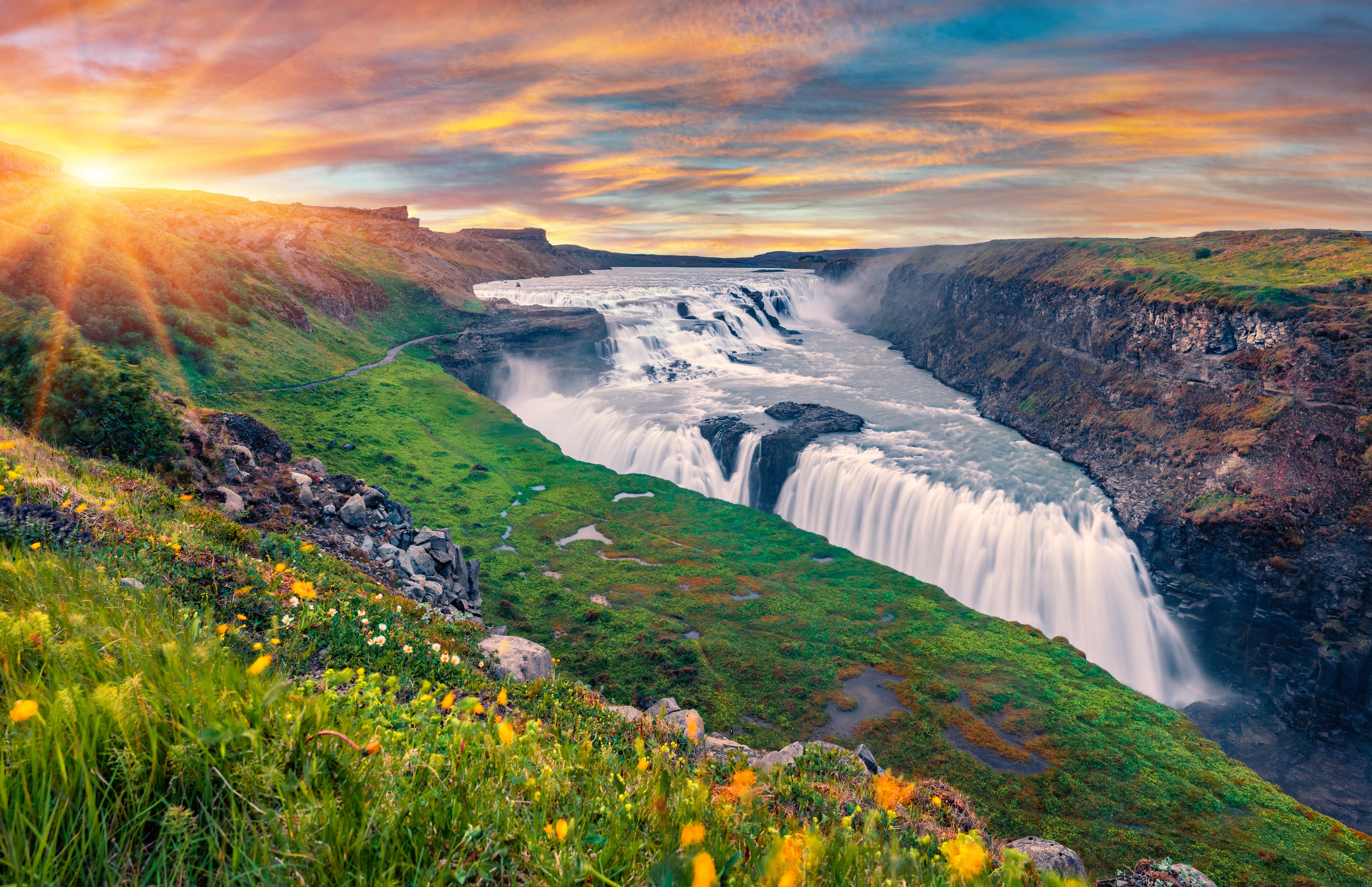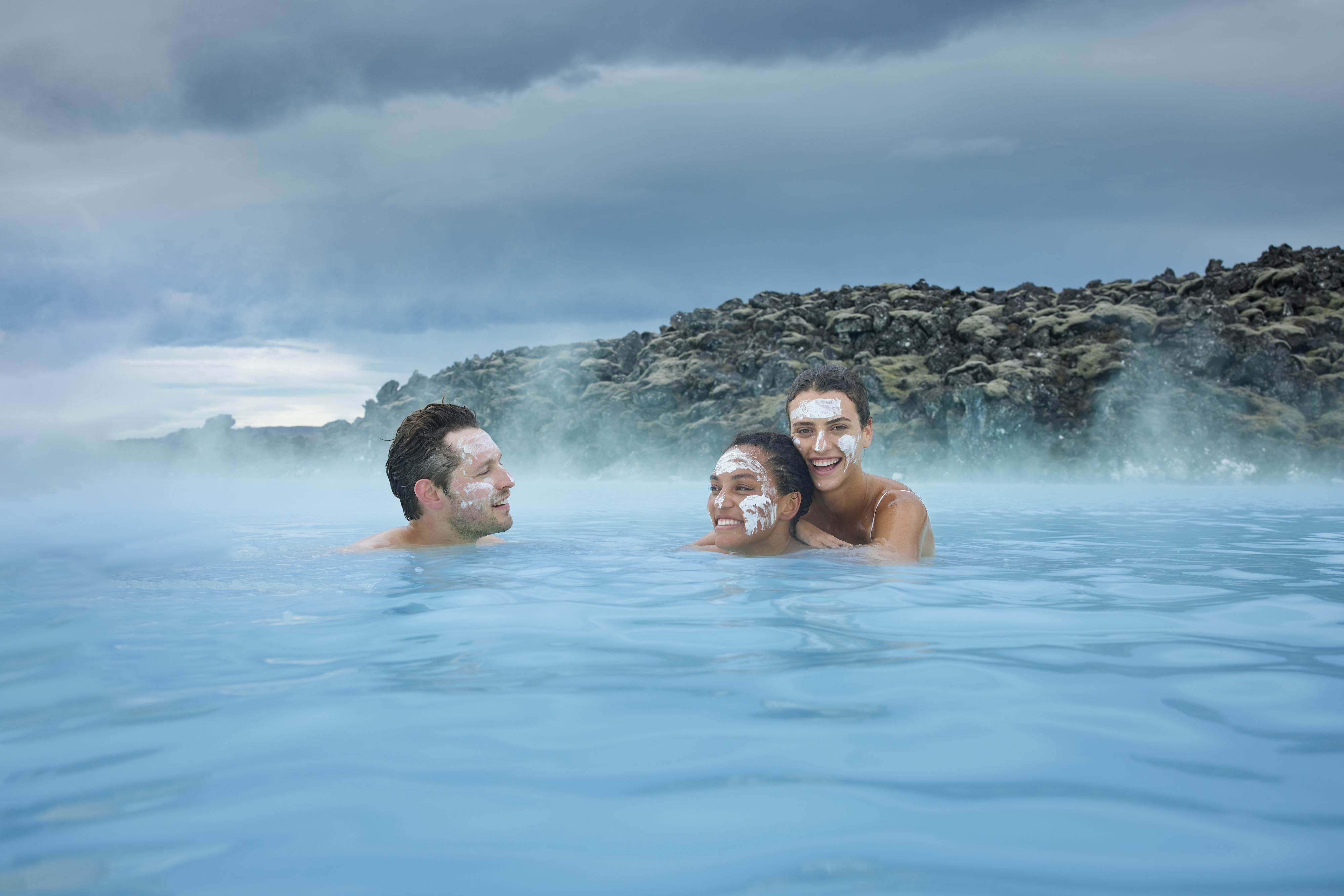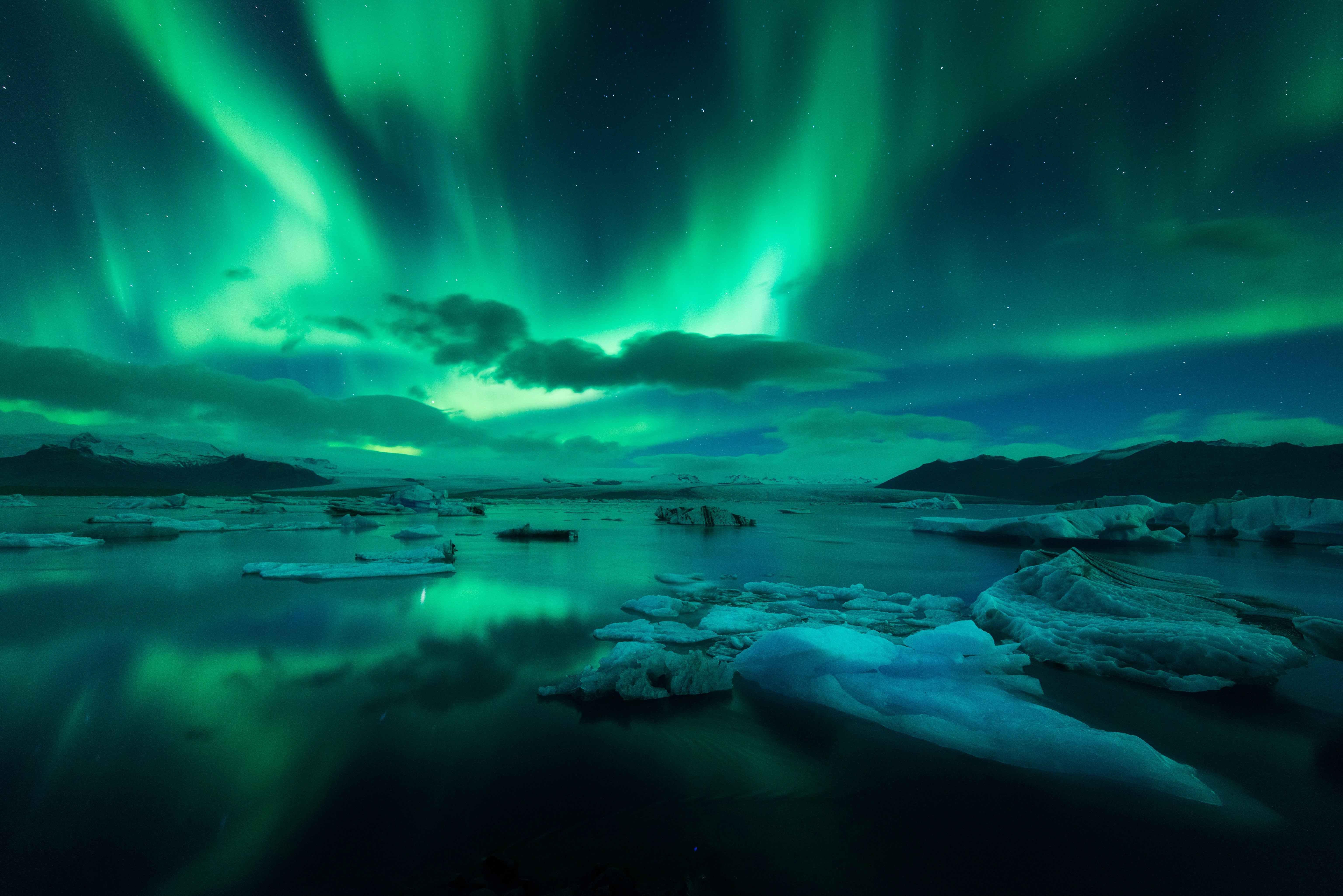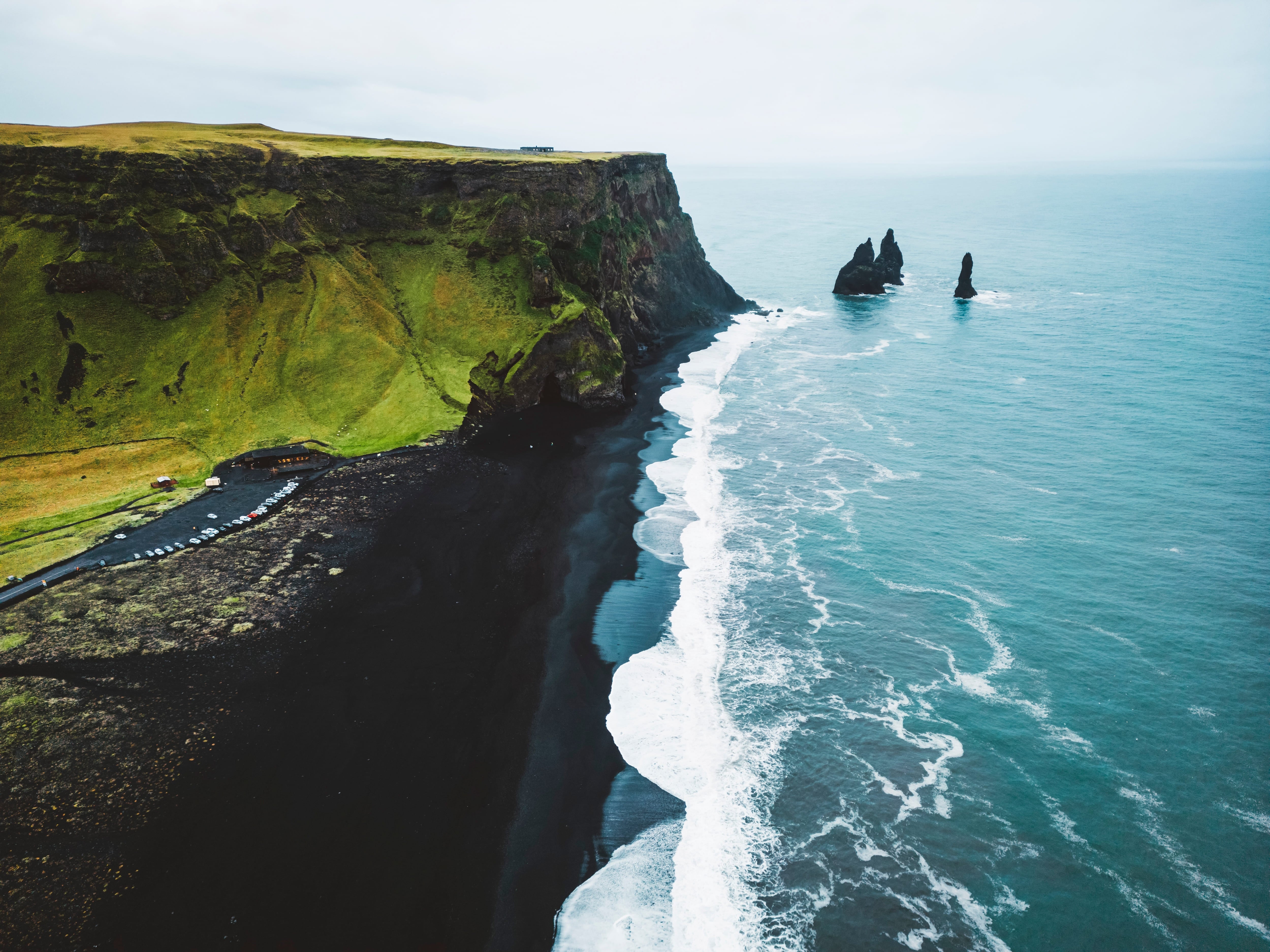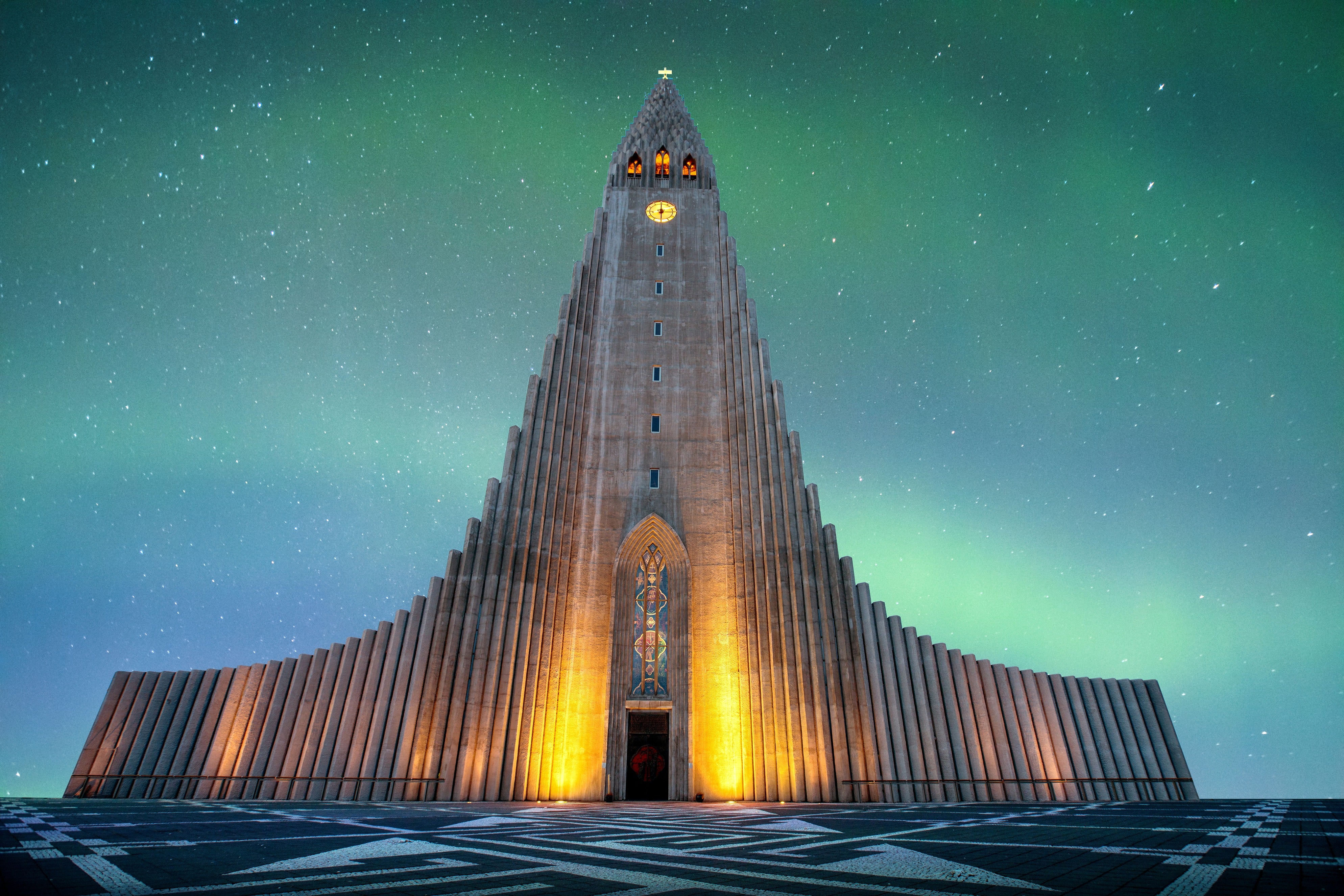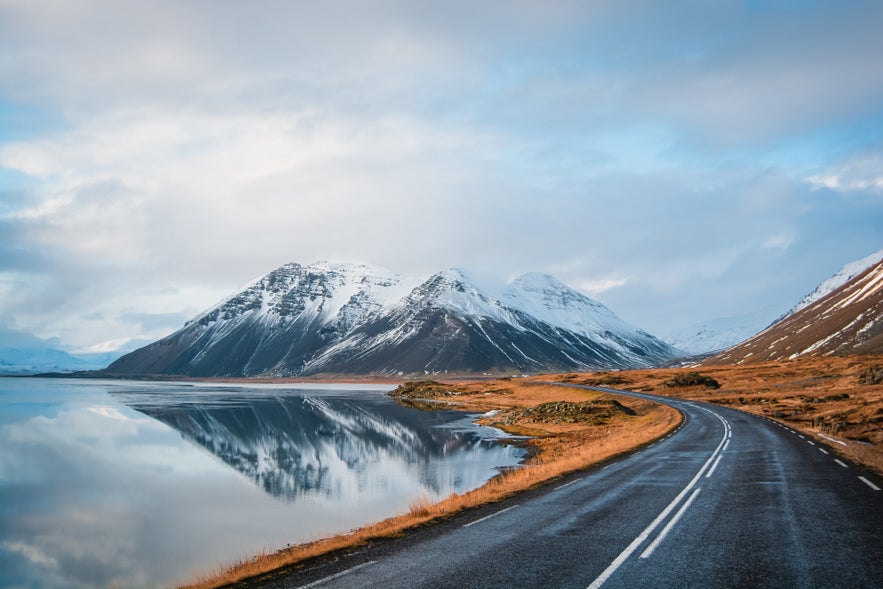
Gear up for cycling in Iceland and ride through a country shaped by fire and ice. From smooth coastal roads to rugged Highland trails, this guide gives you everything you need to plan the ride of a lifetime.
Whether you're planning a multi-day trip around the Ring Road or a shorter ride near Reykjavik, this guide will help you choose the best routes based on your time, interests, and experience level.
Why You Can Trust Our Content
Guide to Iceland is the most trusted travel platform in Iceland, helping millions of visitors each year. All our content is written and reviewed by local experts who are deeply familiar with Iceland. You can count on us for accurate, up-to-date, and trustworthy travel advice.
For riders looking to explore Iceland’s terrain on more adventurous paths, there’s a growing selection of guided mountain biking tours. These experiences take you across rugged landscapes, geothermal valleys, and remote gravel trails.
To make the most of your journey, pair your cycling trip with the widest selection of tours in Iceland. Add glacier hikes, whale watching, or geothermal spa visits to your itinerary and book everything in one place for a seamless experience.
Keep reading for top cycling routes, smart travel tips, and packing advice to help you plan the perfect ride. Now’s the time to explore Iceland on two wheels and create unforgettable memories along the way!
Key Takeaways
-
Epic landscapes, endless freedom: Iceland’s diverse terrain offers road cycling, gravel grinding, mountain biking, and bikepacking across scenic coastlines, lava fields, and remote Highlands.
-
Tailored to your pace: Ride the full Ring Road, take short loops near Reykjavik, or explore quiet fjords and geothermal valleys based on your time, experience, and gear.
-
Plan and prepare: Weather shifts fast, distances between services can be long, and terrain varies. Packing smart, dressing in layers, and choosing the right season are essential.
-
Unforgettable moments: Whether it’s the thrill of cycling beside glaciers or soaking in a hot spring after a long ride, Iceland rewards cyclists with raw beauty and lasting memories.
-
See also: 15 Top Reasons to Visit Iceland
Types of Cycling in Iceland
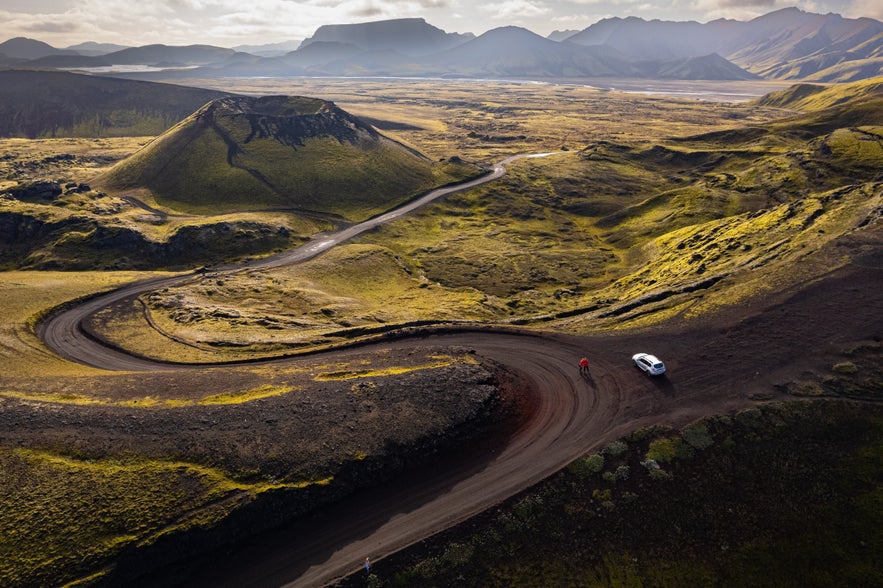
Cycling in Iceland is a fantastic way to explore the country’s natural highlights up close. Ride along smooth highways, discover peaceful gravel roads, challenge yourself on mountain trails, or plan a multi-day bikepacking trip through remote areas.
Each style brings a different kind of adventure. Here’s a look at what to expect from long-distance journeys, road biking, gravel grinding, and mountain biking in Iceland.
Road Cycling in Iceland
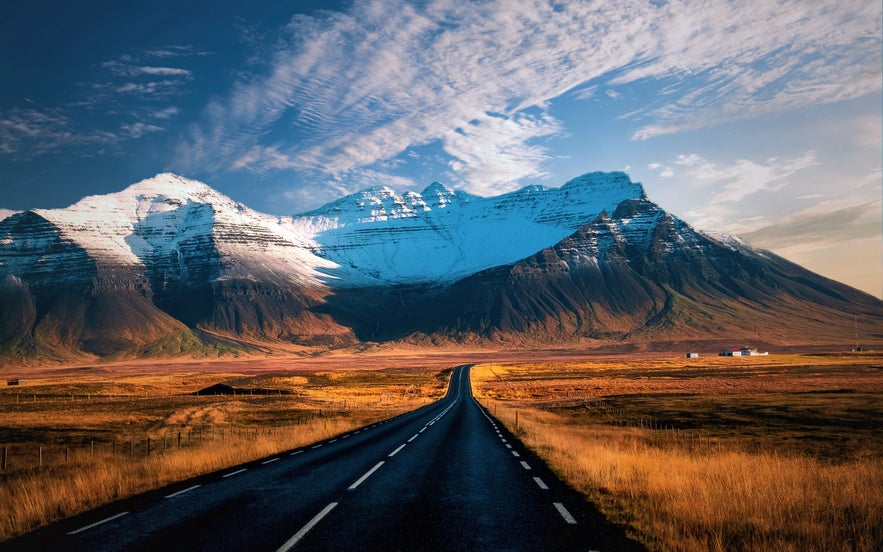 Road cycling is a fun and easy way to explore Iceland on two wheels. Most main tracks are paved and well-maintained. Traffic outside Reykjavik is usually light, but there are more cars and campervans in summer, so it’s good to stay aware while riding.
Road cycling is a fun and easy way to explore Iceland on two wheels. Most main tracks are paved and well-maintained. Traffic outside Reykjavik is usually light, but there are more cars and campervans in summer, so it’s good to stay aware while riding.
Iceland’s Ring Road, or Route 1, is the go-to choice for long-distance cycling. The 828-mile (1,332-kilometer) loop runs through most regions of the country. Most take 10 to 14 days, with stops at waterfalls, beaches, and villages.
For a shorter ride, many travelers choose popular routes along the Golden Circle. This 140 to 190-mile (230 to 300-kilometer) loop includes Thingvellir National Park, Geysir Geothermal Area, and Gullfoss Waterfall.
Coastal roads near Reykjavik or Akureyri also make for great day trips with scenic views and places to stop for a coffee.
Summer is the best season for road cycling in Iceland. The weather is milder, and the long daylight hours mean you can ride further each day. Conditions can still shift quickly, so it’s smart to pack for wind and rain.
Iceland Gravel Riding
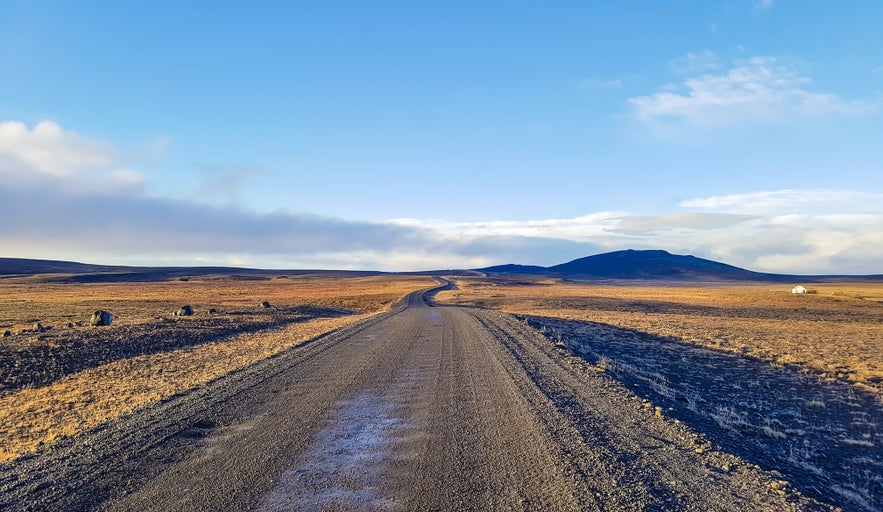 Gravel cycling lets you explore parts of Iceland most travelers never see. Many of the country’s roads have rough surfaces, especially in the highlands and rural areas. These tracks take you across black sands, through highland passes, and into peaceful fjords.
Gravel cycling lets you explore parts of Iceland most travelers never see. Many of the country’s roads have rough surfaces, especially in the highlands and rural areas. These tracks take you across black sands, through highland passes, and into peaceful fjords.
Some of the best gravel routes in Iceland include parts of the Westfjords Way, a 590-mile (950-kilometer) loop, and Kjolur (F35), which connects the north and south through Iceland’s central backroads. These peaceful trails need a solid bike with wide tires to handle gravel, rocks, and packed dirt.
Because these areas are so remote, cyclists should plan their journey carefully. The road surface can vary, and weather conditions may shift without warning. It’s important to bring extra food, water, warm layers, and tools for basic repairs.
In many areas, there may be long stretches without shops or services, and mobile coverage can be limited. With the right setup and preparation, gravel cycling in Iceland can be one of the most rewarding ways to experience the country’s hidden side.
Mountain Biking in Iceland
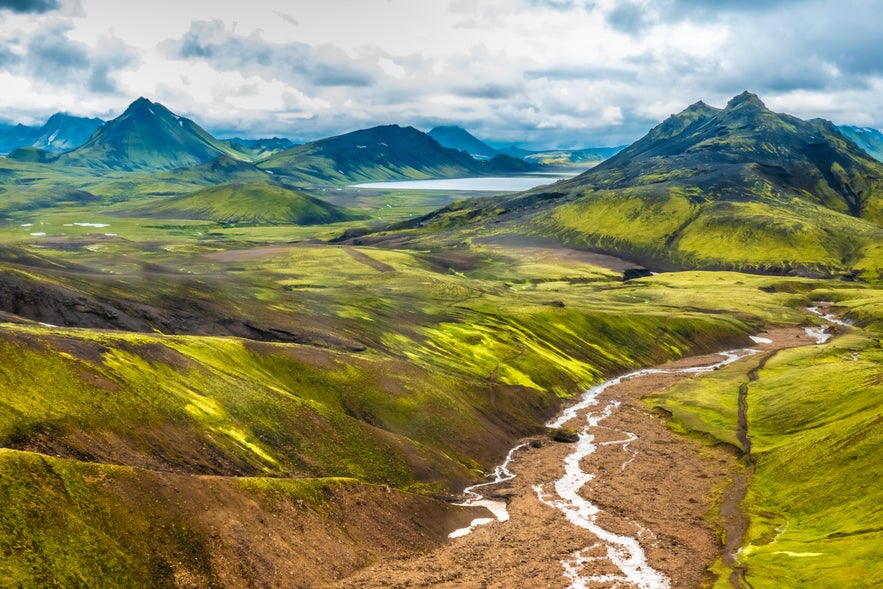 Mountain biking in Iceland means riding over natural ground shaped by volcanoes, rivers, and years of erosion. One of the most famous routes is the Laugavegur Trail, a roughly 34-mile (55-kilometer) journey between the Landmannalaugar Area and Thorsmork Valley.
Mountain biking in Iceland means riding over natural ground shaped by volcanoes, rivers, and years of erosion. One of the most famous routes is the Laugavegur Trail, a roughly 34-mile (55-kilometer) journey between the Landmannalaugar Area and Thorsmork Valley.
This challenging route cuts through the colorful rhyolite terrain of the Kerlingafjoll Mountains, where riders may need to carry their bikes over rough ground. It’s best suited for experienced cyclists with advanced skills on technical trails and mixed surfaces.
The area is also home to the stunning Highland Base, a modern hub for adventure and relaxation in Iceland’s remote Highlands. For an expert-led experience, consider this e-mountain bike tour that explores the same dramatic landscape by pedal-assisted power.
Closer to Reykjavik, mountain bikers can explore marked trails in Heidmork Nature Reserve or ride in upland areas like the Blafjoll Blue Mountains, which double as ski resorts in winter. Some places also offer guided biking tours, but many riders prefer to go solo with a map and GPS.
Expect steep climbs, stream crossings, and rough tracks along the way. A solid bike with good suspension is a must, along with layered clothing and waterproof gear. It’s also smart to bring snacks, water, and basic tools, as some routes are far from services.
Bikepacking & Cycle Touring
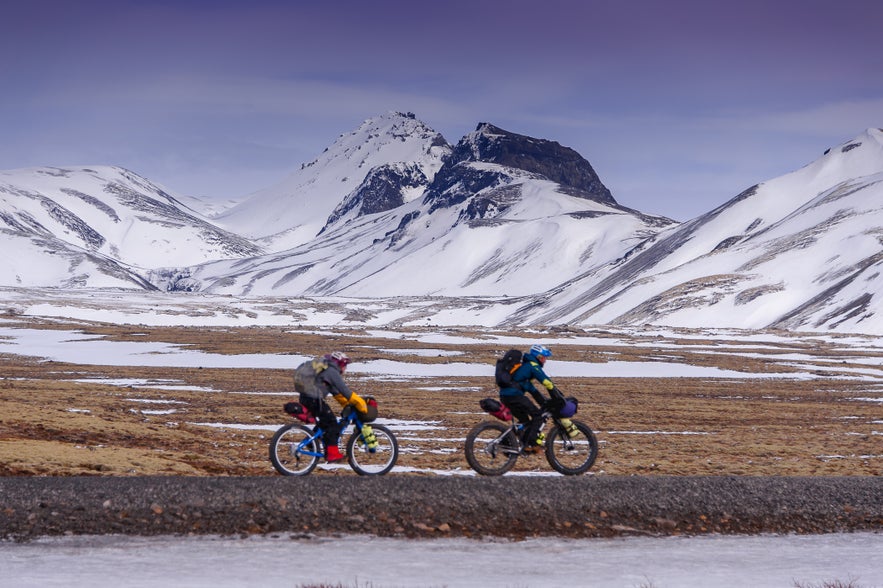 Bikepacking is one of the most adventurous ways to explore Iceland. You’ll carry your gear, camp each night, and ride at your own pace. With the Ring Road and plenty of quiet backroads, Iceland is well suited for independent cycling trips with the right planning.
Bikepacking is one of the most adventurous ways to explore Iceland. You’ll carry your gear, camp each night, and ride at your own pace. With the Ring Road and plenty of quiet backroads, Iceland is well suited for independent cycling trips with the right planning.
Popular routes include a full loop around Route 1 and the 590-mile (950-kilometer) Westfjords Way. Another option is the Iceland Divide, a remote trail that cuts through the country’s rugged interior from north to south.
Gravel or touring bikes are commonly used, outfitted with racks or frame bags to carry tents, sleeping gear, food, and tools.
While bikepacking brings freedom, it also takes planning. Weather changes quickly, and towns can be far apart. Carry enough food, water, and basic supplies, especially in areas with limited mobile signal.
With up to 20 hours of daylight in summer due to the midnight sun, there’s plenty of time to ride and rest. Many cyclists say the experience of solitude and calm is what makes bikepacking in Iceland so special.
E-Biking in Iceland
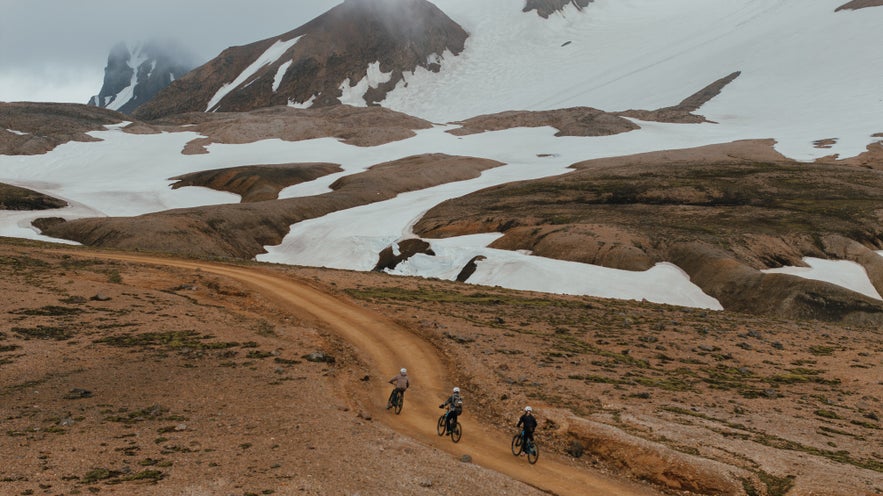 E-biking in Iceland is a great way to explore the country’s landscapes without too much effort. With electric assist, you can cover more ground and handle hills with ease. It’s an excellent option for casual riders or travelers with limited time.
E-biking in Iceland is a great way to explore the country’s landscapes without too much effort. With electric assist, you can cover more ground and handle hills with ease. It’s an excellent option for casual riders or travelers with limited time.
You can use e-bikes on most paved roads and many gravel tracks. Popular routes include the Golden Circle and areas near Reykjavik or Akureyri. For a unique guided ride, check out the hidden waterfalls e-bike tour.
Although e-bikes are more accessible than regular bikes, they still require preparation. Battery range depends on terrain, weather, and riding style. Bring a spare battery or know where to recharge.
E-biking is a comfortable, eco-friendly way to experience Iceland’s highlights at your own pace. It’s ideal for riders who want adventure without a steep physical challenge.
Regional Cycling in Iceland
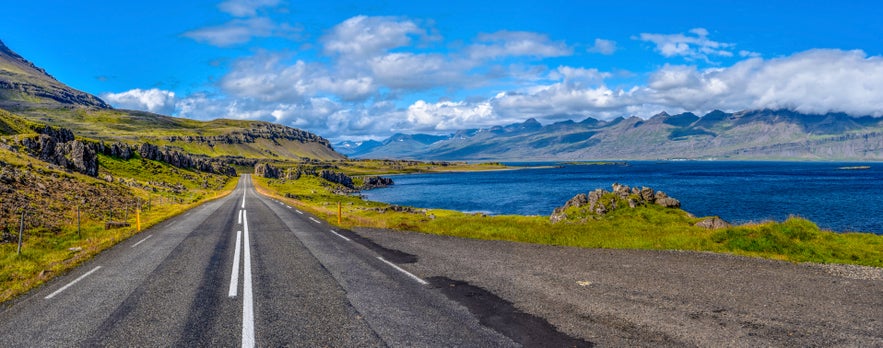 Cycling in Iceland varies by region, with options for every type of rider. In Reykjavik, you'll find bike paths and quiet roads through areas like Laugardalur Valley and the Vesturbaer Neighborhood, ideal for shorter rides.
Cycling in Iceland varies by region, with options for every type of rider. In Reykjavik, you'll find bike paths and quiet roads through areas like Laugardalur Valley and the Vesturbaer Neighborhood, ideal for shorter rides.
Beyond the city, routes become more remote. Rural and inland areas like the South Coast and the Highlands offer gravel trails and backroads, so good planning and the right gear are essential. This section helps you choose the best ride for your style and ability.
Cycling in Reykjavik and the Capital Area
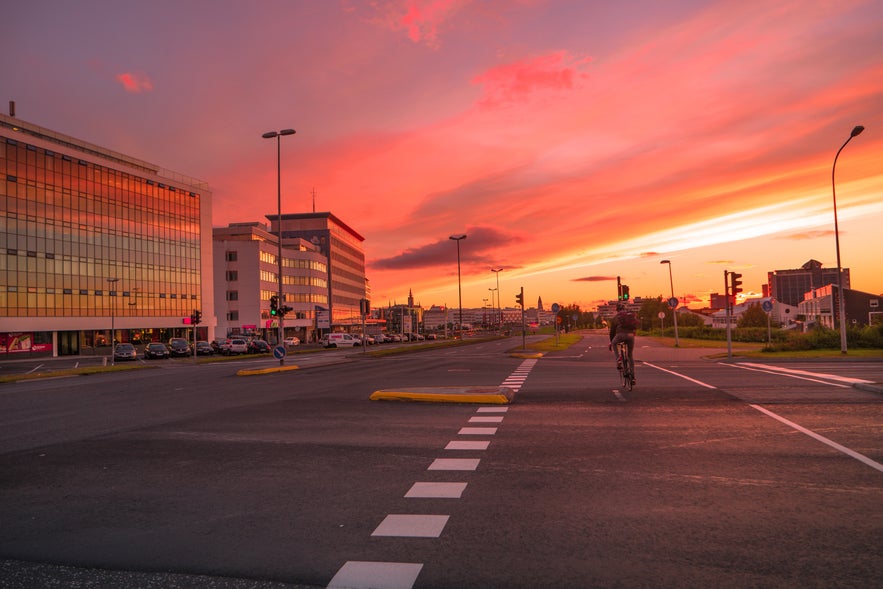 Reykjavik is a small, bike-friendly city and a great base for day rides in Southwest Iceland. Streets are easy to navigate, and coastal paths offer views of the ocean, mountains, and local landmarks like geothermal beaches and sculptures.
Reykjavik is a small, bike-friendly city and a great base for day rides in Southwest Iceland. Streets are easy to navigate, and coastal paths offer views of the ocean, mountains, and local landmarks like geothermal beaches and sculptures.
What To Know Before Cycling in Reykjavik
Before you hit the road, it’s helpful to know what to expect in terms of terrain, sights, services, and weather. Use these tips to plan a smooth and enjoyable ride.
-
Terrain and Roads: Most of the downtown area is flat (by the coast). There are still hills if you head more inland, and especially if you head out to the surrounding capital area. One of the best routes follows the coastline from downtown to Seltjarnarnes, with wide sea views along the way.
-
Top Sights: Key stops include the Sun Voyager Sculpture, Nautholsvik Geothermal Beach, and the coastal path to Seltjarnarnes. On longer rides, highlights include Thingvellir National Park and the Blue Lagoon on the Reykjanes Peninsula.
-
Services and Rentals: You’ll find plenty of bike rental shops in Reykjavik, and some of Iceland’s top guided cycling tours run all year round. The main campground is in Laugardalur Valley near downtown, with cafes and rest stops easy to find.
-
Route Tips: Ride to Thingvellir National Park via Mosfellsbaer Town, a steady 31-mile (50-kilometer) climb with light traffic. For coastal views, take a quieter path through Hafnarfjordur and the Reykjanes Peninsula. Expect strong winds and avoid Route 41 (Reykjanesbraut), the main road between Reykjavik and Keflavik Airport. It’s a busy road with fast-moving traffic, narrow lanes, and no space for bikes.
-
Weather and Wind: Expect cool temperatures, steady wind, and occasional rain, especially near the coast. Start early and wear bright, waterproof layers to stay safe and visible.
-
Why It’s Worth It: Reykjavik gives you a taste of Iceland by bike, with seaside views, cultural stops, and access to longer routes just outside the city. It's a great starting point for a full tour or a relaxed day ride.
-
See also: Top 15 Things to Do in Reykjavik
Cycling on the South Coast
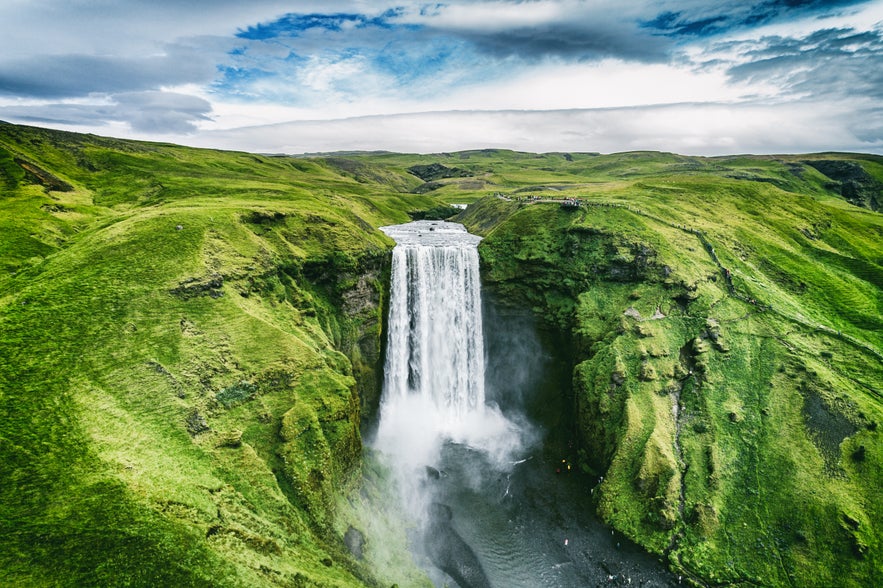 The South Coast is one of the best regions for cycling in Iceland, with new views around every bend. Following Route 1 east from Reykjavik, this road takes you past waterfalls, black sand beaches, and glaciers, with the option to loop in the Golden Circle.
The South Coast is one of the best regions for cycling in Iceland, with new views around every bend. Following Route 1 east from Reykjavik, this road takes you past waterfalls, black sand beaches, and glaciers, with the option to loop in the Golden Circle.
What To Know Before Cycling in the South Coast (and Golden Circle)
The South Coast is one of Iceland’s most scenic regions for long-distance cycling. Use these tips to plan and prepare for the road conditions and weather.
-
Terrain and Roads: Route 1 has a mostly flat road, with a few gentle hills and single-lane bridges along the way. As you travel east of Vik, the landscape opens into wide glacial plains like Skeidararsandur.
-
Top Sights: Key stops include Seljalandsfoss, Skogafoss, Reynisfjara Black Sand Beach, Skaftafell in Vatnajokull National Park, and Jokulsarlon Glacier Lagoon.
-
Services and Stops: Towns like Hvolsvollur, Vik, Kirkjubaejarklaustur, Skaftafell, and Hofn are spaced well for daily rides. Some stretches are remote, so it’s smart to stock up on food when you can and plan overnight stops at campgrounds or guesthouses.
-
Weather and Wind: This area gets frequent showers and steady headwinds, especially in the afternoon. Begin your ride in the morning and wear bright, waterproof gear to stay safe and visible.
-
Why It’s Worth It: The route offers dramatic scenery and a sense of freedom you can’t get from a car. You’ll hear waterfalls before you see them, find quiet coastal viewpoints, and experience Iceland’s varied landscapes in full.
-
Check out: The Ultimate Guide to Iceland's South Coast
Cycling in the Golden Circle
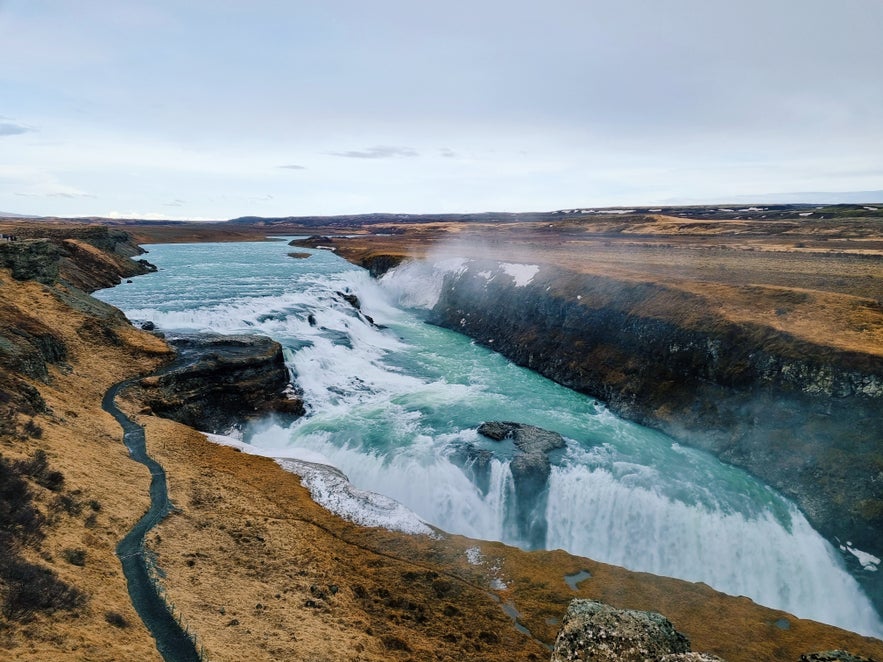 The Golden Circle is one of Iceland’s most popular scenic loops and a rewarding cycling route packed with natural wonders. Starting from the town of Selfoss, you’ll follow quiet countryside roads to geysers, waterfalls, and rift valleys. It’s ideal for a two- to three-day ride.
The Golden Circle is one of Iceland’s most popular scenic loops and a rewarding cycling route packed with natural wonders. Starting from the town of Selfoss, you’ll follow quiet countryside roads to geysers, waterfalls, and rift valleys. It’s ideal for a two- to three-day ride.
What To Know Before Cycling the Golden Circle
The Golden Circle is a fantastic ride for cyclists looking to combine challenge and sightseeing. It’s a shorter route than the South Coast stretch but includes more hills and traffic near major attractions.
-
Terrain and Roads: The loop covers around 140 to 190 miles (230 to 300 kilometers), with well-paved roads that include steep sections near Gullfoss and Geysir. While most roads are two-lane, expect busier traffic during midday near popular stops.
-
Top Sights: Must-see spots include Thingvellir National Park, the erupting Geysir Geothermal Area, and Gullfoss Waterfall. The route also passes Laugarvatn, a small lakeside town with geothermal baths. It’s a great place to take a rest day.
-
Services and Stops: Campgrounds are conveniently located near Laugarvatn, Geysir, and Gullfoss. Small shops and cafes are scattered along the way. Stock up on snacks in Selfoss or Fludir and plan for limited services between major stops.
-
Weather and Wind: Expect cool mornings and mild afternoons, with occasional rain and strong headwinds, especially in open highland areas. Early starts help avoid traffic and give you calmer conditions for the ride.
-
Why It’s Worth It: Cycling the Golden Circle lets you experience Iceland’s famous attractions at your own pace. You’ll feel the mist from Gullfoss, hear geysers rumble before they erupt, and ride through ancient lava fields. It’s a close-up experience of the country’s raw and varied nature.
-
Explore also: The Ultimate Guide to Iceland's Golden Circle
Cycling in West Iceland & Snaefellsnes Peninsula
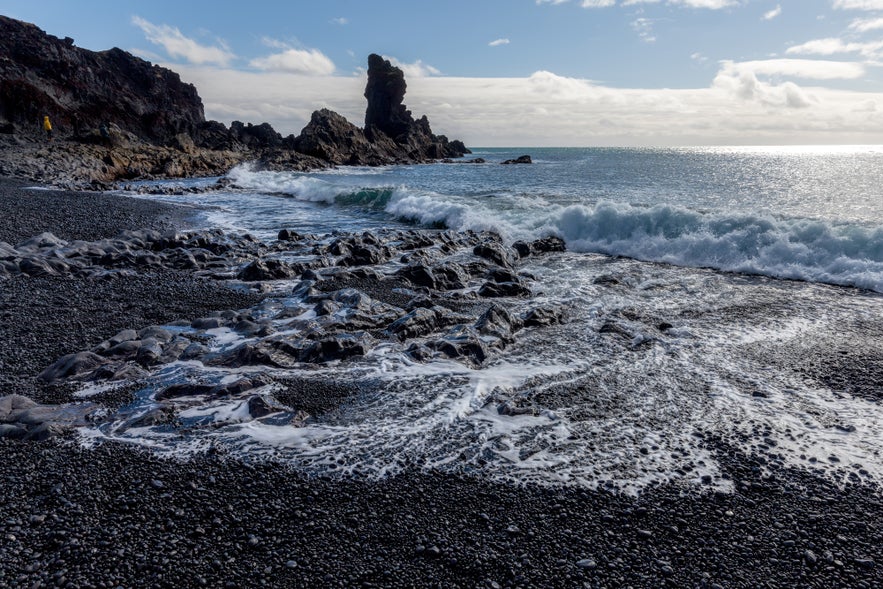 West Iceland and Snaefellsnes Peninsula show how varied cycling in Iceland can be. This region has everything from quiet fishing towns to lava fields and glacier views, perfect for riders who want adventure without going too remote.
West Iceland and Snaefellsnes Peninsula show how varied cycling in Iceland can be. This region has everything from quiet fishing towns to lava fields and glacier views, perfect for riders who want adventure without going too remote.
What To Know Before Cycling the West Iceland & Snaefellsnes Peninsula
This region gives you a rewarding ride, but it’s worth knowing the details before you begin. Here’s what you need to remember before setting out.
-
Terrain and Roads: Expect smooth asphalt on most of the route, especially along the southern coast. The northern side has a short rocky path, best suited for gravel bikes. The full Snaefellsnes loop is 93 to 125 miles (150 to 200 kilometers) and takes about 2 to 3 days.
-
Top Sights: See Mount Kirkjufell near Grundarfjordur, the black beach at Djupalonssandur, Londrangar’s sea cliffs, and the orange Svortuloft Lighthouse. Snaefellsjokull Glacier offers scenic views throughout the ride.
-
Services and Stops: Plan for 19 to 31 miles (30 to 50 kilometers) between reliable stops. Grundarfjordur and Olafsvik offer restaurants, small grocery stores, and gear shops. Affordable campsites are available in summer, but it’s wise to book guesthouses in Iceland in advance.
-
Route Tips: Start in Borgarnes and follow Route 54 west. From Stykkisholmur, take the Baldur ferry to the Westfjords or return inland via Route 56 for a shorter loop.
-
Weather and Wind: Coastal winds are common, especially near the glacier and lava fields. Light rain and mist often pass, but mornings are calmer with ocean views. Bring windproof layers since the weather can change quickly, particularly in the north.
-
Why It’s Worth It: Cycling Snaefellsnes feels like riding through a condensed version of Iceland, with glaciers, lava fields, cliffs, and sea views all along the way. It’s the perfect balance of adventure, beauty, and accessibility.
Cycling in the Westfjords
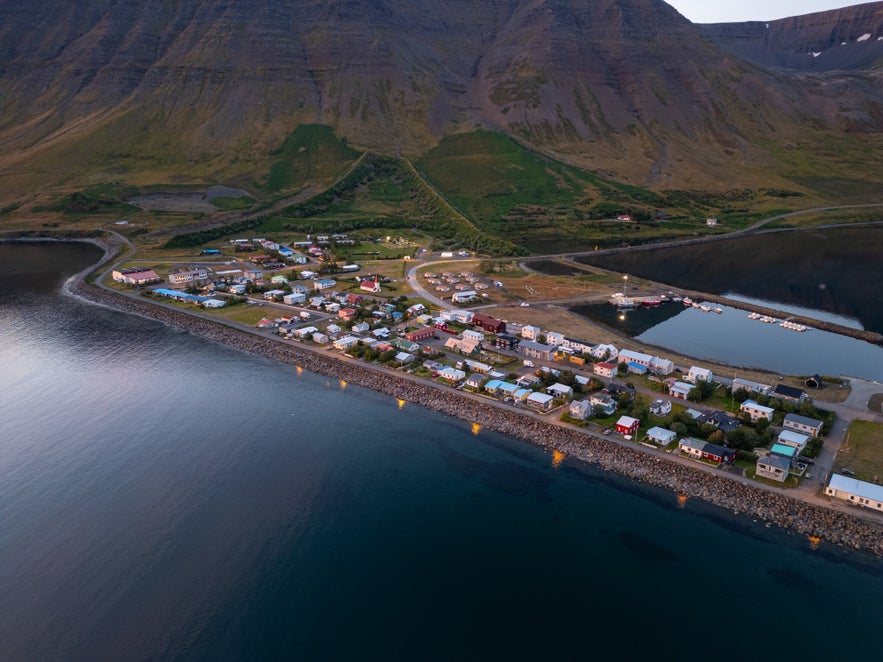 If you're up for a more remote challenge, consider extending your route to the Westfjords via the Baldur ferry from Stykkisholmur. This detour offers a wild contrast to the smoother rides of Snaefellsnes, with rougher terrain and unmatched isolation.
If you're up for a more remote challenge, consider extending your route to the Westfjords via the Baldur ferry from Stykkisholmur. This detour offers a wild contrast to the smoother rides of Snaefellsnes, with rougher terrain and unmatched isolation.
What To Know Before Cycling the Westfjords
Before setting out, it helps to know what kind of conditions, weather, and services to expect. Here’s a quick guide to help you prepare.
-
Terrain and Roads: Get ready for some serious uphill action, tight switchbacks, and ground that shifts between asphalt and gravel. Many roads are rough and bumpy, with loose stones, especially in the north and south. Some tunnels are one-lane, so make sure to bring lights and stay visible at all times.
-
Top Sights: Don’t miss Dynjandi Waterfall, geothermal pools like Reykjafjardarlaug, and the Latrabjarg Cliffs for puffin watching and dramatic coastal views. Long, empty roads and remote fjord scenery make this region feel truly untouched.
-
Services and Stops: Towns are few, but Isafjordur serves as the main hub with full services and a bike shop. Patreksfjordur and Holmavik offer shops, fuel, and accommodation, making them good places to stock up before entering remote areas.
-
Route Tips: Many cyclists ride the full Westfjords Way loop or sections of it. You can take the Baldur ferry from Stykkisholmur or fly from Reykjavik to Isafjordur to start your trip. Loops from Isafjordur are great for shorter tours.
-
Weather and Wind: Conditions are cooler and wetter than in the south. Expect fog, strong wind, and rain, even in summer. Mornings tend to be calmer, so early starts are best.
-
Why It’s Worth It: Cycling the Westfjords is an experience few travelers attempt. Quiet roads, steep cliffs, and remote fjords offer a rare sense of solitude. It takes effort and planning, but the reward is an unforgettable journey through Iceland’s wildest landscapes, far from the crowds and deep in nature.
Cycling in the Highlands
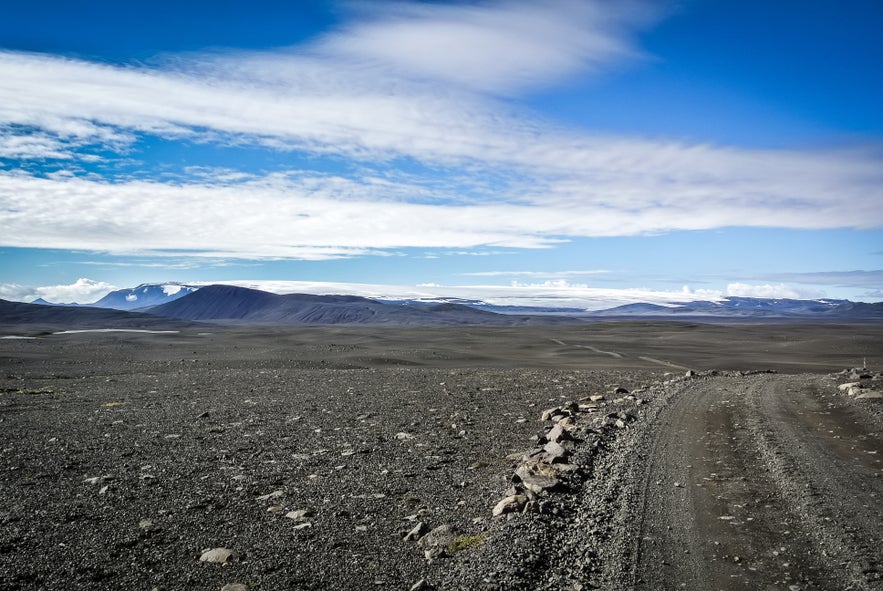 Cycling in Iceland’s highlands is one of the most challenging and rewarding experiences you can have on two wheels. It’s remote, rugged, and best suited for well-prepared mountain bikers and bikepackers ready for a true backcountry ride.
Cycling in Iceland’s highlands is one of the most challenging and rewarding experiences you can have on two wheels. It’s remote, rugged, and best suited for well-prepared mountain bikers and bikepackers ready for a true backcountry ride.
What To Know Before Cycling the Highlands
Riding through the Highlands means managing without towns, shops, or consistent shelter. The notes below cover surface types, available huts, and what to expect from the weather.
-
Terrain and Roads: Expect rocky tracks, long gravel stretches, and patches of sand or lava. Kjolur (F35) is 124 miles (200 kilometers) and suitable for touring bikes with strong tires.
-
Top Sights: Hveravellir’s hot springs, glacier views of Langjokull and Hofsjokull, and the Highlands’ stark volcanic beauty. Sprengisandur adds black deserts, icy rivers, and true isolation.
-
Services and Stops: There are no towns in the Highlands, so be fully self-sufficient. Huts in areas like Hveravellir and Nyidalur offer basic shelter and campsites, but space is limited and usually must be booked in advance. Bring all food, water, and warm gear.
-
Route Tips: Kjolur is more manageable and better suited for first-time Highland riders. Sprengisandur is remote and demanding, with river crossings and minimal shelter. Plan your days carefully and check hut availability before setting out.
-
Weather and Wind: This region has some of Iceland’s wildest weather. Wind and rain can arrive fast, and even snow is possible in summer. Start early for calmer conditions, and pack warm, waterproof layers and something to shield your face.
-
Why It’s Worth It: Cycling in the Highlands takes you through Iceland’s wildest landscapes. Glaciers, geothermal areas, and wide open terrain create a remote and unforgettable adventure for riders seeking something truly off the beaten path.
-
Explore also: The Ultimate Guide to the Highlands of Iceland
Cycling in Eastfjords
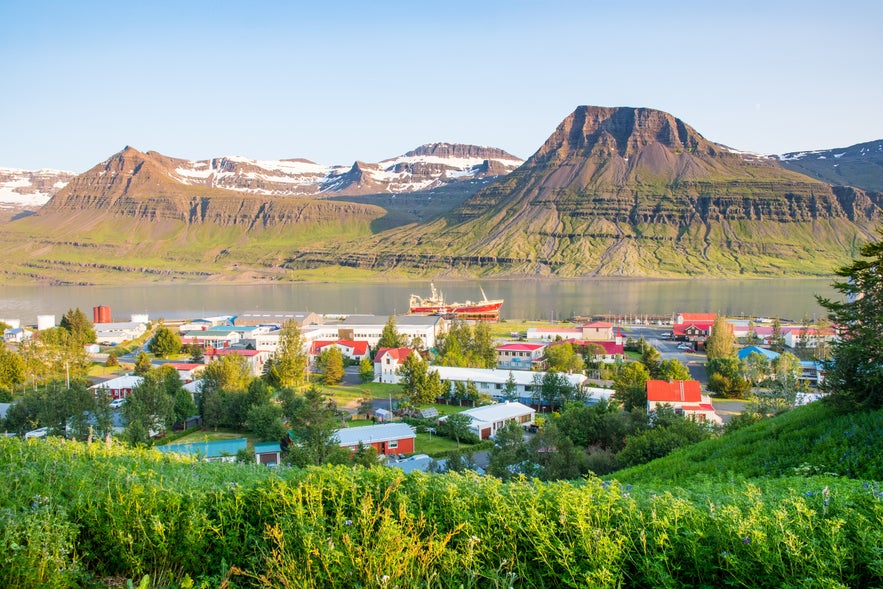 East Iceland is a peaceful region to explore by bike, with deep fjords, quiet villages, and dramatic coastal views. For travellers who prefer calm roads and space to ride, cycling in the Eastfjords is a rewarding choice.
East Iceland is a peaceful region to explore by bike, with deep fjords, quiet villages, and dramatic coastal views. For travellers who prefer calm roads and space to ride, cycling in the Eastfjords is a rewarding choice.
What To Know Before Cycling the Eastfjords
Winding coastal paths, limited services, and shifting weather make planning essential in the East. The notes below cover key sections, stops, and what to prepare for before your ride.
-
Terrain and Roads: Leave the Ring Road to follow coastal tracks like 92 and 96 through Djupivogur, Stodvarfjordur, and Reydarfjordur. Expect hills, curves, and a mix of gravel and asphalt. Route 939 over Oxi Pass is steep and best for experienced riders.
-
Top Sights: Look for Petra’s Stone Collection in Stodvarfjordur, black sand beaches near Djupivogur, and the dramatic fjord views from the Oxi Pass. Seydisfjordur offers waterfalls, colorful houses, and a lively arts and culture vibe.
-
Services and Stops: Djupivogur, Reydarfjordur, and Egilsstadir have groceries, guesthouses, and pools. You’ll find 19 to 37 miles (30 to 60 kilometers) between services, so pack food and water. Seydisfjordur is a scenic detour with a ferry port and artsy charm.
-
Route Tips: For a quieter, more scenic ride, take the longer coastal roads instead of the mountain passes. With most traffic using tunnels, the old fjord routes are calm and peaceful. Mjoifjordur is an optional ride for those with time and strong legs.
-
Weather and Wind: The East is drier than the South, but conditions change quickly. Winds can be strong near fjords and headlands. Summer days may get warm, though cool and misty weather is common.
-
Why It’s Worth It: The Eastfjords are all about dramatic coastlines, quiet roads, and small, lesser-known villages. It’s one of the only places in Iceland where you can spot wild reindeer and enjoy a deep sense of calm between the mountains and the sea.
Cycling in North Iceland
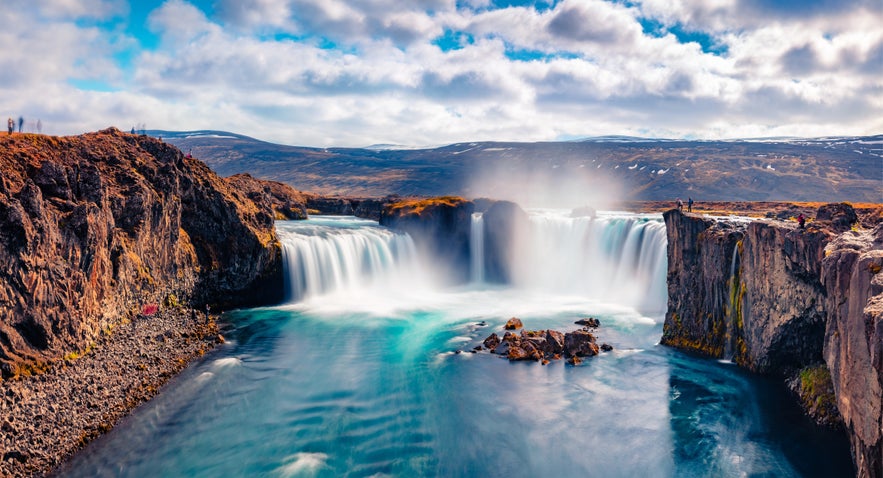 Cycling in North Iceland is a rewarding way to take in the country’s diverse landscapes. Ride through deep fjords, volcanic terrain, and quiet coastal roads, with stops in Akureyri, one of Iceland's most charming towns. It’s ideal for riders looking for variety and the option to explore beyond the main route.
Cycling in North Iceland is a rewarding way to take in the country’s diverse landscapes. Ride through deep fjords, volcanic terrain, and quiet coastal roads, with stops in Akureyri, one of Iceland's most charming towns. It’s ideal for riders looking for variety and the option to explore beyond the main route.
What To Know Before Cycling in North Iceland
From fjords to volcanic landscapes, this region offers a well-balanced ride. The tips below outline what to expect from surfaces, sights, and services along the way.
-
Terrain and Roads: North Iceland has reliable main roads and rougher gravel tracks. The Ring Road between Akureyri and Myvatn is in excellent condition. To reach the town, cyclists must skip the Vadlaheidi Tunnel and take the scenic Vikurskard Pass instead.
-
Top Sights: See Godafoss Waterfall, Namaskard’s geothermal fields, and the mud pools at Hverir. Go whale watching in Husavik, explore lava formations at Dimmuborgir, and enjoy fjord views near Siglufjordur.
-
Services and Stops: Akureyri is a bike-friendly hub with all the services you’ll need. Smaller towns like Husavik and Siglufjordur are full of charm and have easy access to supplies. Campers can stop at Lake Myvatn for a scenic stay and a soak in the Myvatn Geothermal Baths.
-
Route Tips: Start in Akureyri and follow Eyjafjordur east to Godafoss and Lake Myvatn for lava fields and geothermal sights. Continue to Husavik for coastal views or ride the 155 to 162 miles (250 to 260 kilometers) Diamond Circle for a scenic multi-day loop.
-
Weather and Conditions: This region tends to be sunnier than the south, though wind and cold are still possible. In September, you might see the aurora borealis near Myvatn or join a northern lights tour in North Iceland for a better chance.
-
Why It’s Worth It: North Iceland shows you every side of this country in one ride. From the volcanoes and waterfalls around Lake Myvatn to the fjords and fishing towns of the Trollaskagi Peninsula, the region combines natural beauty, well-maintained roads, and conveniently spaced towns with essential services.
-
Explore also: 11 Must-See Destinations in North Iceland
Best Cycling Routes and Trails in Iceland
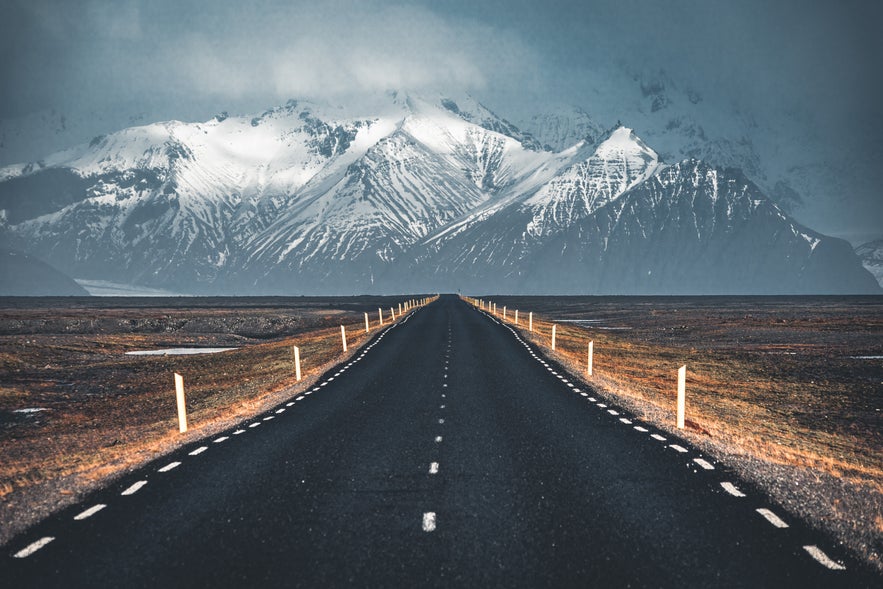 Throughout the sections above, we’ve mentioned many cycling routes and regions. Now it's time to focus on a few that stand out.
Throughout the sections above, we’ve mentioned many cycling routes and regions. Now it's time to focus on a few that stand out.
These iconic rides are well-known among cyclists in Iceland. Some are long-distance tours, others are tough off-road trails, but all have a special status. These “must-ride” routes capture the imagination of riders from around the world.
The Ring Road (Route 1)
 The Ring Road is Iceland’s classic long-distance ride. This 828-mile (1,332-kilometer) loop circles the entire country and takes you past waterfalls, glaciers, fjords, volcanoes, and towns like Akureyri and Egilsstadir.
The Ring Road is Iceland’s classic long-distance ride. This 828-mile (1,332-kilometer) loop circles the entire country and takes you past waterfalls, glaciers, fjords, volcanoes, and towns like Akureyri and Egilsstadir.
Most of the route runs on well-maintained roads, with lighter traffic outside the busy south. Cyclists usually take 14 to 18 days, depending on pace. With regular campsites and bus connections, it’s one of the most accessible routes for multi-day tours in Iceland.
If you're curious about the Ring Road but not ready to bike the full loop, consider a self-drive trip instead. It lets you enjoy shorter cycling adventures along scenic stretches while still exploring Iceland's breathtaking landscapes at your own pace.
The Westfjords Way
 The Westfjords Way is a 590-mile (950-kilometer) loop through one of Iceland’s most remote regions. The route includes over 39,000 feet (12,000 meters) of elevation and passes fjords, quiet villages, and scenic coastal roads.
The Westfjords Way is a 590-mile (950-kilometer) loop through one of Iceland’s most remote regions. The route includes over 39,000 feet (12,000 meters) of elevation and passes fjords, quiet villages, and scenic coastal roads.
You’ll need a gravel or touring bike with wide tires to handle the mix of surfaces. With long distances between grocery stores, guesthouses, and bike repair options, and frequent climbs throughout the route, this ride is best tackled between late June and August.
If you’re not taking on the full loop, there are still great rides to enjoy in the region. One option is the guided cycling tour from Talknafjordur to Sveinseyri Beach. Here, you’ll pass Europe’s westernmost grove and end with a soak in a natural hot pool.
Another option is the 2.5-hour ride around Isafjordur’s fjord trails. It features forest paths, coastal views, and a relaxed pace suited for moderate fitness levels.
The Golden Circle Loop
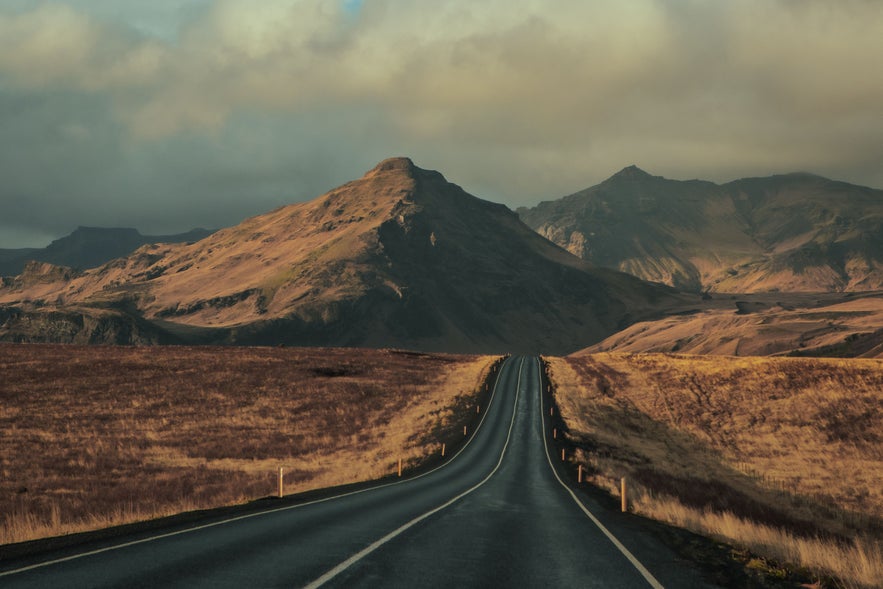 The Golden Circle may be shorter than Iceland’s other iconic cycling routes, but it’s no less rewarding. It’s ideal for newer touring cyclists or anyone looking for a short adventure near Reykjavik, with time to enjoy hot springs, local food, and the classic Icelandic views.
The Golden Circle may be shorter than Iceland’s other iconic cycling routes, but it’s no less rewarding. It’s ideal for newer touring cyclists or anyone looking for a short adventure near Reykjavik, with time to enjoy hot springs, local food, and the classic Icelandic views.
The 140 to 190-mile (230 to 300-kilometer) Golden Circle route typically starts in Reykjavik and is often completed over three days, with stops at Thingvellir National Park, Geysir, and Gullfoss Waterfall. For a shorter option, you can also begin the ride from Selfoss town.
While locals often treat the Golden Circle as a weekend escape, it’s also a great option for visitors with limited time. The route offers a scenic, accessible ride that packs nature, history, and culture into a compact cycling experience.
Kjolur Route (Interior Highland Route F35)
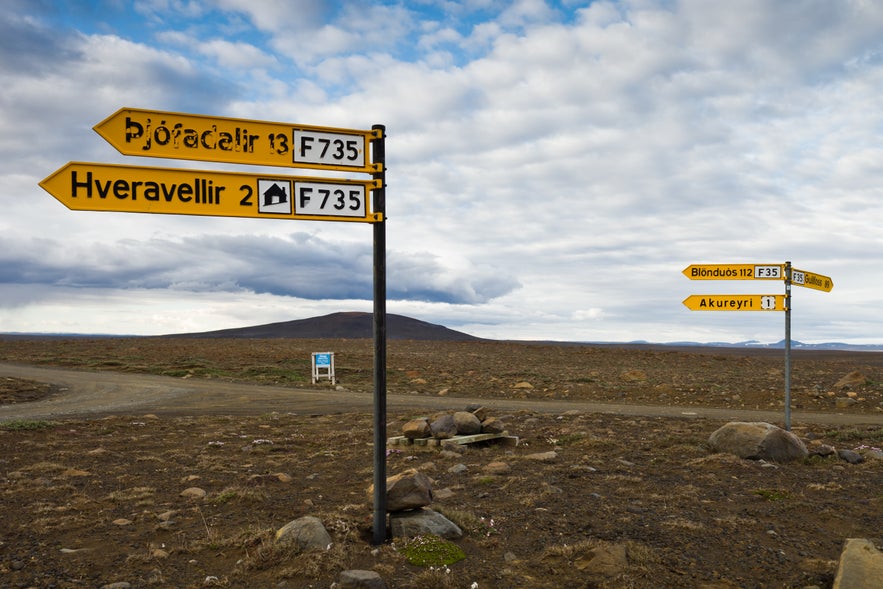 For cyclists, Kjolur is a 103-mile (165-kilometer) route from the Hvita River Valley near Gullfoss to the town of Blonduos in the north. It’s considered the most accessible of Iceland’s highland crossings, with no river fords and a rough but rideable surface.
For cyclists, Kjolur is a 103-mile (165-kilometer) route from the Hvita River Valley near Gullfoss to the town of Blonduos in the north. It’s considered the most accessible of Iceland’s highland crossings, with no river fords and a rough but rideable surface.
The route passes between the Langjokull and Hofsjokull Glaciers and offers wide views across open Highland scenery. Halfway along the route, Hveravellir offers steam vents, a hot pool, and a simple hut where cyclists can rest.
While Kjolur is more accessible than other Highland routes, all Highland crossings are only open in summer. Even then, conditions can be cold and unpredictable, so travelers should always be prepared for sudden changes in weather. Still, for those prepared for the challenge, cycling Kjolur is a one-of-a-kind experience.
Laugavegur Trail (Landmannalaugar to Thorsmork)
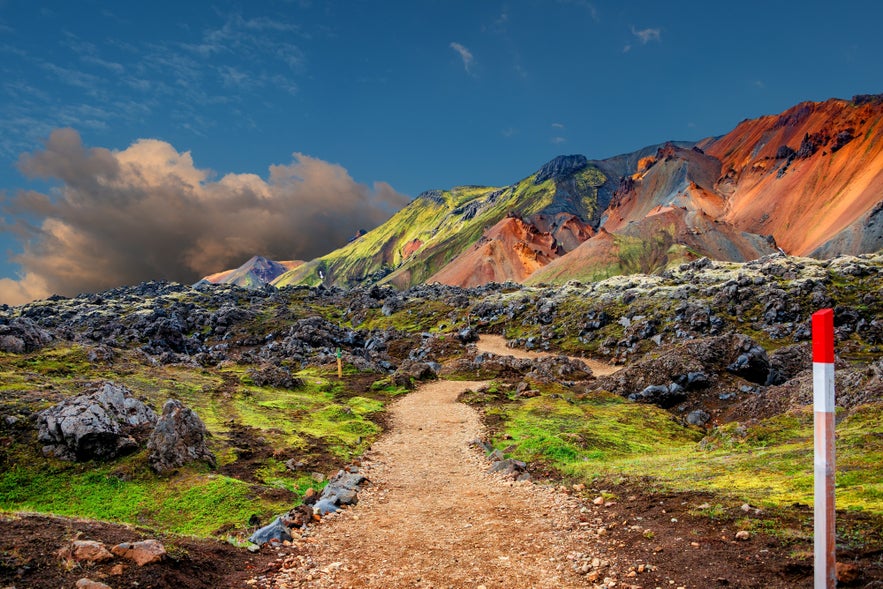 The Laugavegur Trail is Iceland’s most famous trek and a serious challenge for experienced mountain bikers. The 34-mile (55-kilometer) route runs from Landmannalaugar to Thorsmork, crossing lava fields, colorful rhyolite hills, snowy passes, and glacial rivers.
The Laugavegur Trail is Iceland’s most famous trek and a serious challenge for experienced mountain bikers. The 34-mile (55-kilometer) route runs from Landmannalaugar to Thorsmork, crossing lava fields, colorful rhyolite hills, snowy passes, and glacial rivers.
Parts of the trail are extremely steep or rough, and cyclists may need to carry their bikes across rivers or up difficult slopes. Riding is discouraged during peak hiking season, so always check current conditions. Most bikers complete the route in two days, with a night in huts like Hrafntinnusker or Alftavatn.
Since the trail is point-to-point, transport must be arranged in advance. Summer buses can carry bikes if pre-booked. For those who complete it, Laugavegur is a true test of skill. Even cycling to Landmannalaugar on the surrounding gravel roads offers an unforgettable adventure.
Other Notable Routes and Trails
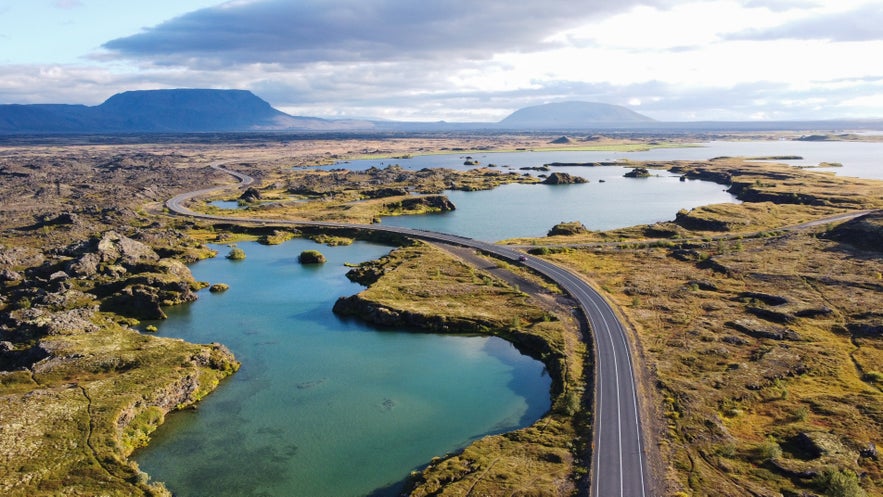 Here are a few more routes to explore beyond the main cycling paths. They highlight Iceland’s diverse terrain and are great options for riders looking to venture further.
Here are a few more routes to explore beyond the main cycling paths. They highlight Iceland’s diverse terrain and are great options for riders looking to venture further.
-
Sprengisandur (F26): A remote and demanding interior route. Only for experienced cyclists with strong gear and preparation. Completing it is a major achievement.
-
Diamond Circle (North Iceland): A scenic loop linking Husavik, Asbyrgi Canyon, Dettifoss Waterfall, and Lake Myvatn. Not an official bike route, but a favorite for cyclists exploring the north.
-
Reykjanes Coastal Loop: A short ride near Reykjavik featuring geothermal areas like Krysuvik and lava-strewn coastlines. Ideal for a one- to two-day tour.
-
Hringvegur Ultra: Inspired by events like the WOW Cyclothon, this is a non-stop challenge around the Ring Road. Thanks to summer daylight, it’s possible to ride through the night without darkness.
Guided Cycling Tours in Iceland
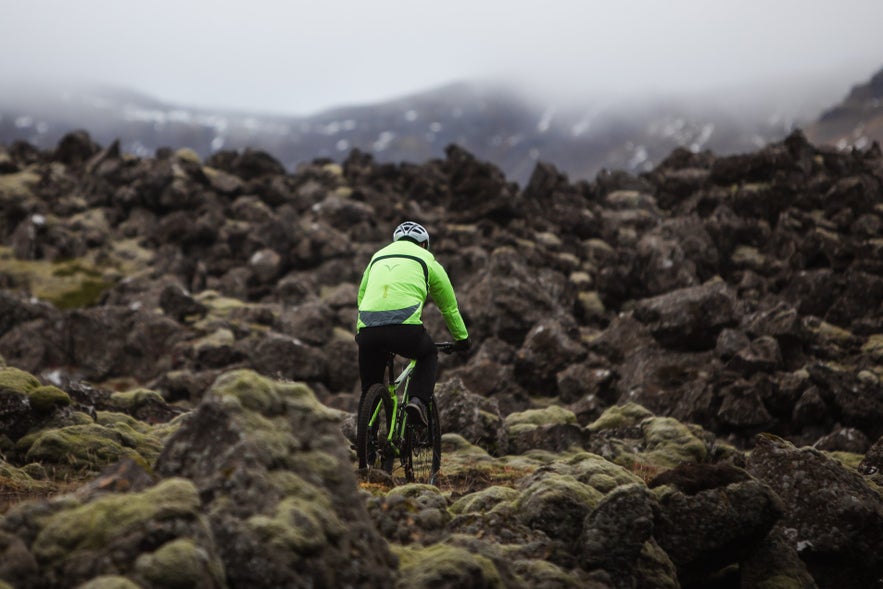 If you're looking to explore Iceland by bike without the stress of logistics or route planning, guided cycling tours are a fantastic option. These curated experiences are led by local experts who are familiar with Iceland’s landscapes, weather patterns, and hidden gems.
If you're looking to explore Iceland by bike without the stress of logistics or route planning, guided cycling tours are a fantastic option. These curated experiences are led by local experts who are familiar with Iceland’s landscapes, weather patterns, and hidden gems.
Why Choose a Guided Tour?
Guided cycling tours offer a stress-free way to enjoy Iceland’s scenery. Most include bike rentals, support vehicles, accommodation, and meals, so you can focus on the ride instead of planning. Everything is arranged to make the journey smooth and enjoyable.
They’re especially helpful in remote regions like the Highlands or Westfjords, where conditions can be challenging and distances between services are long. For newcomers or travelers on a tight schedule, guided options provide a safer, more efficient, and more streamlined experience.
Types of Guided Tours
You'll find a variety of guided cycling tours across Iceland, from short scenic rides to full-day adventures. Longer routes like the Ring Road or Westfjords Way suit experienced riders ready for gravel roads, steep climbs, and remote, challenging terrain.
If you're looking for a moderate cycling experience, these shorter tours offer scenic routes at a relaxed pace:
-
E-Bike Tour in Stykkisholmur: Enjoy a two-hour ride along fjord views and coastal paths on the Snaefellsnes Peninsula. This tour offers a comfortable pace and beautiful scenery, ideal for a lighter adventure.
-
Bike and Bath Tour: Combine a gentle ride with a visit to a geothermal spa. This option is perfect if you're short on time or prefer light activity with a focus on relaxation and scenic surroundings.
Practical Tips for Cycling in Iceland
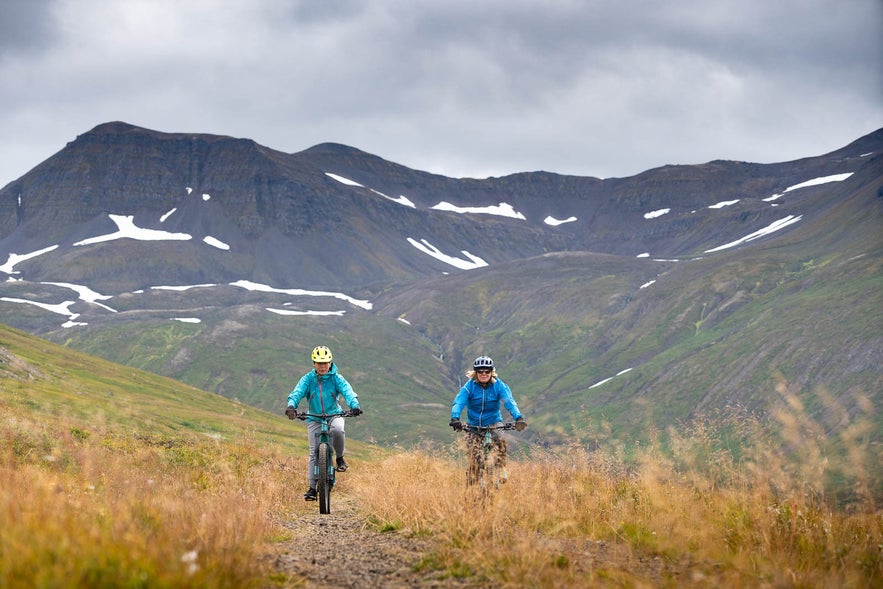 Planning is a big part of making your cycling trip in Iceland smooth, safe, and enjoyable. The country’s landscapes are incredible, but the weather, terrain, and remoteness mean a bit of preparation goes a long way.
Planning is a big part of making your cycling trip in Iceland smooth, safe, and enjoyable. The country’s landscapes are incredible, but the weather, terrain, and remoteness mean a bit of preparation goes a long way.
In this section, you’ll find practical tips on when to ride, how to get a bike, road conditions, safety, and where to stay. Once the details are sorted, you can focus fully on the freedom of the ride and the scenery all around you.
Bringing or Renting a Bike in Iceland
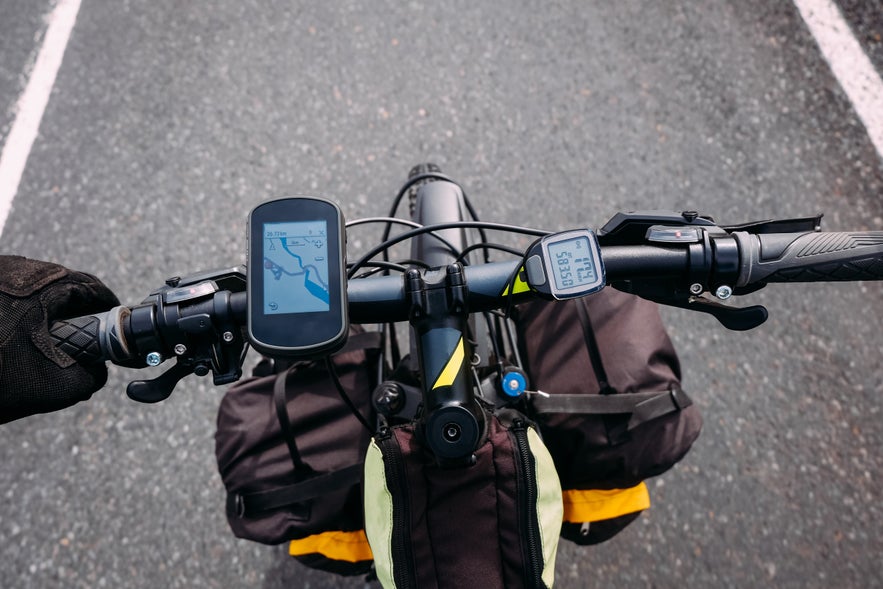 Choosing to rent or bring your own bike depends on your plans. Rentals are great for short rides, but for longer tours or remote routes, bringing your own bike gives you more freedom.
Choosing to rent or bring your own bike depends on your plans. Rentals are great for short rides, but for longer tours or remote routes, bringing your own bike gives you more freedom.
In Reykjavik, several shops offer touring, mountain, and e-bikes by the day or week, often with repair kits. Outside the capital, rentals are limited but possible in places like Akureyri and Isafjordur.
If you're planning a longer tour, bringing your own bike might be a better option. Most airlines accept bicycles as checked baggage, but packing requirements and fees can vary, so it’s important to check your airline’s specific policies in advance.
Use a proper bike box or bag with the pedals removed, handlebars turned, and tires deflated. For extra help, visit a local bike shop to ensure it’s packed correctly and meets any size or weight restrictions.
Travelers from mainland Europe can also take a ferry to Seydisfjordur with fully loaded touring bikes. This option is especially popular for those starting their ride in East Iceland or avoiding air travel with gear.
Some buses in Iceland allow bikes if there’s space, though booking ahead is recommended. There’s no bike-share system in Reykjavik, so renting or bringing your own is a must. With a little planning, it’s easy to gear up and start exploring.
Weather and Best Seasons for Cycling in Iceland

This “midnight sun” means you can ride early or late, avoid peak traffic, and enjoy quiet stretches in soft evening light. Early summer tends to be cooler, while September brings shorter days and colder nights.
Winter cycling, from October to April, is tough and not recommended for most visitors. Limited daylight, snow, and icy roads make conditions challenging. Only well-equipped cyclists ride in winter, usually near towns. Most tours resume in spring.
Even in summer, Iceland’s weather can change quickly. Rain, wind, and temperature drops are common, especially in the Highlands. Check the Icelandic weather forecast and road conditions daily, dress in layers, and bring proper rain and wind gear.
Wind deserves extra attention. Headwinds of 10 to 20 meters per second (20 to 45 miles per hour) can make riding difficult or even unsafe. Stay flexible, take a rest day if needed, and use tailwinds to your advantage. When the skies clear, the ride is unforgettable.
What to Wear for Cycling in Iceland
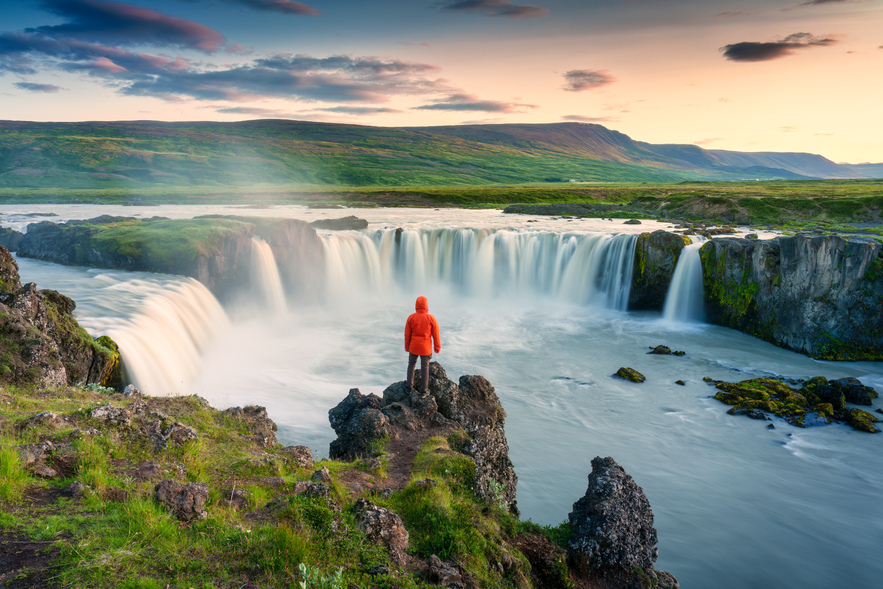 Dressing well is essential when cycling in Iceland, where the weather can change quickly. The best approach is to wear layers. Begin with a moisture-wicking base, add insulation, and finish with a waterproof, windproof shell for protection.
Dressing well is essential when cycling in Iceland, where the weather can change quickly. The best approach is to wear layers. Begin with a moisture-wicking base, add insulation, and finish with a waterproof, windproof shell for protection.
For base layers, choose merino wool or technical synthetics that keep you dry. Avoid cotton because it holds moisture and chills you. Add a fleece or insulated mid-layer, then wear breathable rain gear to stay comfortable in wet conditions.
To protect your extremities, wear full-finger gloves, a thermal hat, and waterproof shoe covers. Even during summer, cold winds are common. Windproof clothing helps maintain warmth, while extra socks, a buff, and warm gloves add extra comfort.
Visibility is vital on Iceland’s roads. Wear bright, high-visibility clothing and use reflective gear, especially in fog or low light. Flashing bike lights improve safety in all conditions, so carry them even during the long daylight hours of summer.
Adjust your outfit based on location and terrain. Highland routes often need heavier insulation and better rain protection than coastal or city rides. Always prepare for wind, rain, or sudden cold, even if the day begins with clear skies.
Road Conditions and Traffic in Iceland
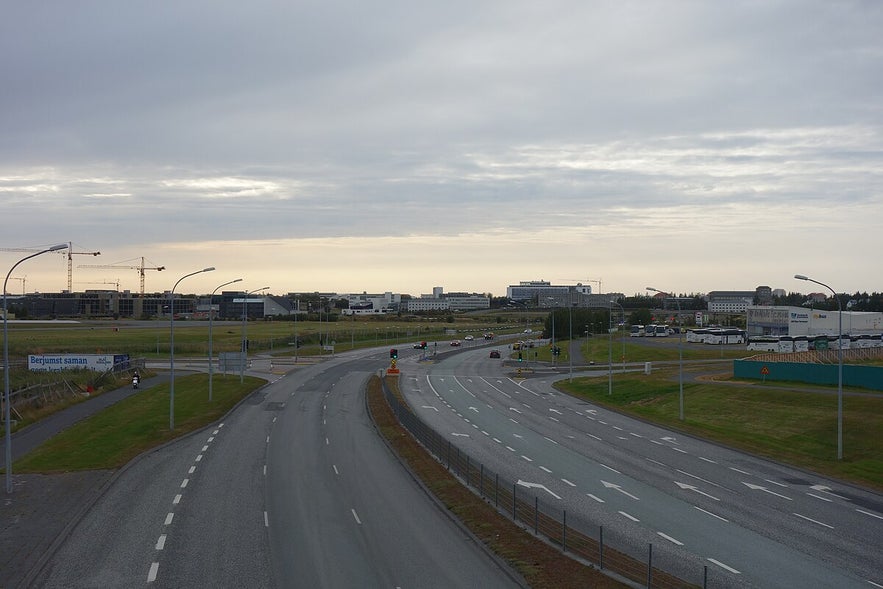
Photo by Linguaddict, Wikimedia Creative Commons. No edits made.
Iceland’s roads range from highways to gravel tracks. Main routes like the Ring Road are paved, but many are narrow, so cyclists often share the lane with cars. Stay visible, keep to the right, and watch for traffic near Reykjavik and the Golden Circle.
Watch for one-lane bridges, especially in the south and east. Always wait your turn and cross with care. Some tunnels allow bikes if you use lights, but others don’t. Cyclists are not allowed in the Hvalfjordur and Vadlaheidi tunnels, but both have scenic detours.
Many regional and Highland roads are gravel, from smooth to rough. F-roads open in summer and often have deep sand or unbridged rivers. With the right gear, cyclists can ride them, but should be ready to walk or turn back if needed.
Traffic is light outside the southwest, and drivers are usually respectful. Stay visible, ride on the right, and use lights in low visibility. Watch for sheep on the road in summer and give them space. With awareness and planning, riding in Iceland can be a safe and rewarding experience.
Iceland Regulations and Safety Tips
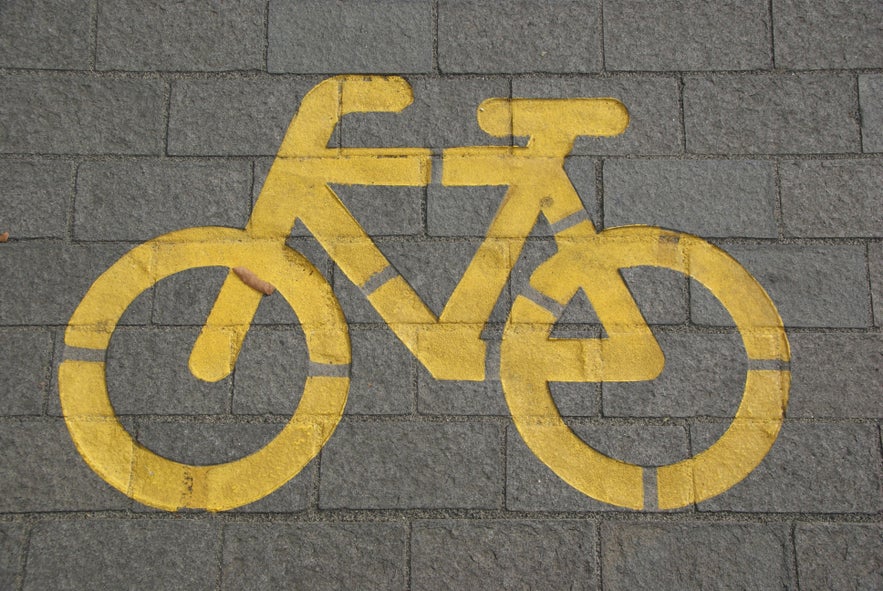 Cycling in Iceland does not require any special permits or licenses, but riders are expected to follow traffic rules and take sensible precautions for safety. Here are the key regulations and safety tips to know:
Cycling in Iceland does not require any special permits or licenses, but riders are expected to follow traffic rules and take sensible precautions for safety. Here are the key regulations and safety tips to know:
-
Follow the Rules of the Road: Cyclists must ride on the right side and follow the same rules as cars. Ride single-file on roads, obey signs and signals, and use hand signals for turns and stops. At roundabouts, take the lane like a vehicle and signal clearly.
-
Helmet Use: Helmets are legally required for riders under 16, but are strongly recommended for everyone.
-
No Off-Road Riding: Cycling off marked roads or trails is illegal and causes serious damage to the landscape. Even short detours can harm fragile moss or lava fields. Stick to roads or marked bike paths at all times.
-
Be Visible: Weather can shift quickly, with fog, mist, or low light, even in summer. Use a white front light and red rear light when needed, and wear bright or reflective clothing to stay visible to drivers.
-
Plan for Emergencies: Cell service is limited in remote areas. Carry a first aid kit and consider using the SafeTravel website to log your route. In an emergency, call 112. For remote trips, a personal locator beacon or satellite communicator is a smart addition.
-
Wildlife and Nature Hazards: While Iceland has no dangerous animals, arctic terns may swoop down toward your head if you pass near nesting areas. Ride through quickly or use a flag. Near lakes like Myvatn, midges can be annoying, so carry a head net or repellent.
-
General Safety: Pack enough food, water, and warm layers, including a waterproof jacket and gloves. Hypothermia can be a risk even in summer if you get wet and cold.
By preparing properly and following these tips, you'll make your cycling trip in Iceland both safe and rewarding. Iceland offers unforgettable experiences, but it also asks for care and respect in return.
Bike Maintenance and Repair Resources
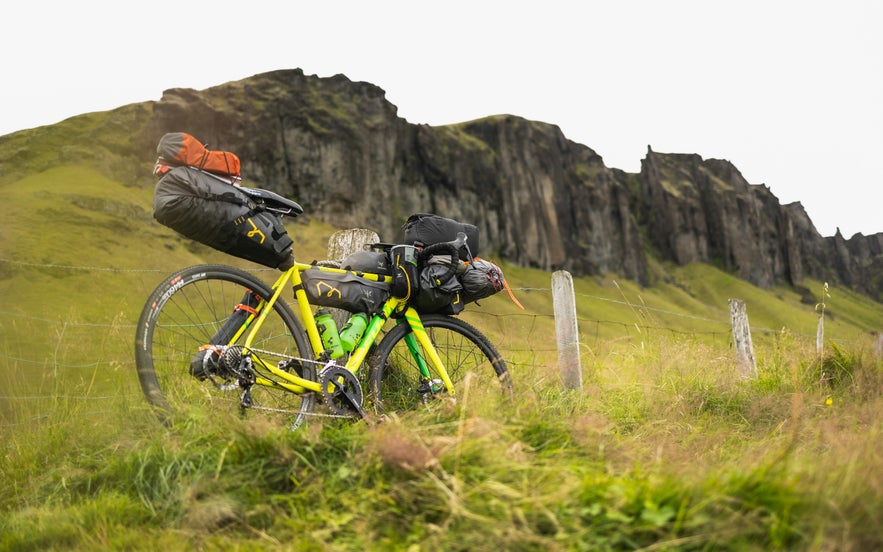 Towns in Iceland are far apart, so cyclists need to be prepared to fix their bikes on their own. Before your trip, get a tune-up or visit a shop, replace worn parts, and use strong tires for rough roads. While riding, keep these basic maintenance tips and tools in mind.
Towns in Iceland are far apart, so cyclists need to be prepared to fix their bikes on their own. Before your trip, get a tune-up or visit a shop, replace worn parts, and use strong tires for rough roads. While riding, keep these basic maintenance tips and tools in mind.
-
Carry a Repair Kit: Bring the basics for common fixes, including spare tubes, patch kit, tire levers, pump, multi-tool, chain lube, and a quick link. If your bike uses disc brakes, bring extra pads since volcanic dust wears them down. Duct tape and zip ties help with quick repairs.
-
Bike Shops: Most are in Reykjavik, with a few in Akureyri and one in Isafjordur. Smaller towns may only have basic parts at gas stations like N1 or sports stores, so don’t count on full repairs. For major issues in remote areas, be ready to fix things yourself or get a ride to the next town.
-
Local Help: Icelanders are usually helpful, especially in rural areas. If you break down near a farm or village, don’t hesitate to ask for help. Locals may lend tools or offer a lift, and car mechanics can sometimes assist with simple fixes.
-
Emergency Fixes: Flats are common on sharp gravel, so use puncture-resistant tubes or sealant and carry a spare tube. Rough roads can break spokes, so bring extras and a spoke wrench. For chain breaks, have a quick link and know how to use it. Check brakes often, as long descents can wear pads or overheat rims.
-
Maintenance on the Road: Clean and lube your chain after wet or dusty rides. Rinse the drivetrain if a hose is available. Adjust tire pressure based on the surface. Gas stations have air pumps, so bring a Presta adapter if needed.
-
Storage and Transport: If you're pausing your ride, some buses and domestic flights can carry bikes for a fee (usually packed). For short-term storage, check with hotels or campsites, as many will let you leave your bike or gear while you explore or take a break.
With the right preparation and a few essential tools, you’ll be ready to handle most bike issues on the road. A mechanical problem doesn’t have to ruin your adventure. Being prepared means you can stay calm and keep going.
Accommodation and Camping for Cyclists
 Finding a place to sleep in Iceland takes some planning, especially on a bike tour. The good news is that cyclists can use both regular accommodations and campsites, offering more flexibility. Here's what to expect.
Finding a place to sleep in Iceland takes some planning, especially on a bike tour. The good news is that cyclists can use both regular accommodations and campsites, offering more flexibility. Here's what to expect.
Campgrounds in Iceland
Iceland’s campsites are ideal for cyclists, with most towns and attractions having one in summer. They typically offer toilets, showers, and water, and cost around 1,500 to 2,500 ISK (around 12 USD to 20 USD). No booking is usually needed; just pitch your tent in the designated area.
Campgrounds are great for cyclists. You can meet other bikers, recharge devices, and refill water. With long summer daylight, bring an eye mask for sleeping, and earplugs can help block out the sound of wind or flapping tents.
Wild Camping in Iceland
Wild camping is allowed in remote areas under strict rules. You may camp one night on uncultivated public land if no site is nearby, you're not in a group, and you leave no trace. It's banned near farms, on cultivated land, and in popular regions like the South Coast.
Some cyclists still wild camp when needed. If you do, use a stove, camp on gravel or rock (not moss), and pack out all waste. When possible, plan to end your day at an official campground.
Hostels and Guesthouses in Iceland
If you want a break from camping, Iceland has plenty of options, from cozy countryside guesthouses to budget-friendly hostels. In Reykjavik’s top hostel options and Akureyri accommodations, you’ll often find places that allow indoor or secure bike storage.
In smaller towns, Icelandic guesthouses and countrywide hotels offer a warm bed and a great way to recharge. Some farms along cycling routes welcome riders. Since rooms fill up fast in summer, it’s best to book ahead, especially if you plan to rest every few days. Always check if bike storage is available.
Mountain Huts in Iceland
In the Highlands and national parks, you’ll find mountain huts along popular routes. Places like the Laugavegur Trail or Hveravellir offer shared shelter and bunks. Book in advance if you’d rather not carry a tent. These huts are convenient but can be pricey.
Shelter from the Weather in Iceland
Always have a backup plan for bad weather. If storms are expected, stop in town or stay at a campsite with indoor facilities. Getting caught out overnight in harsh conditions can be risky, so seek shelter when needed. Always take local weather warnings seriously and don’t take unnecessary safety risks.
Food and Water
Towns usually have grocery stores or small gas station shops, but in remote areas, you’ll rely on your own supplies. Bring a stove if you plan to cook, since it’s part of the camping experience.
Iceland’s tap water is safe and high quality. You can refill bottles in towns or from clean streams away from farms. On dry Highland routes, carry extra water to get you through long stretches without a source.
Overall, Iceland can be very cyclist-friendly in terms of places to stay: the combination of campgrounds and the occasional indoor lodging gives you options. Just remember that in peak season, the popular spots fill up, and weather may force you to be flexible.
-
See also: Travel Safety in Iceland
Frequently Asked Questions About Cycling in Iceland
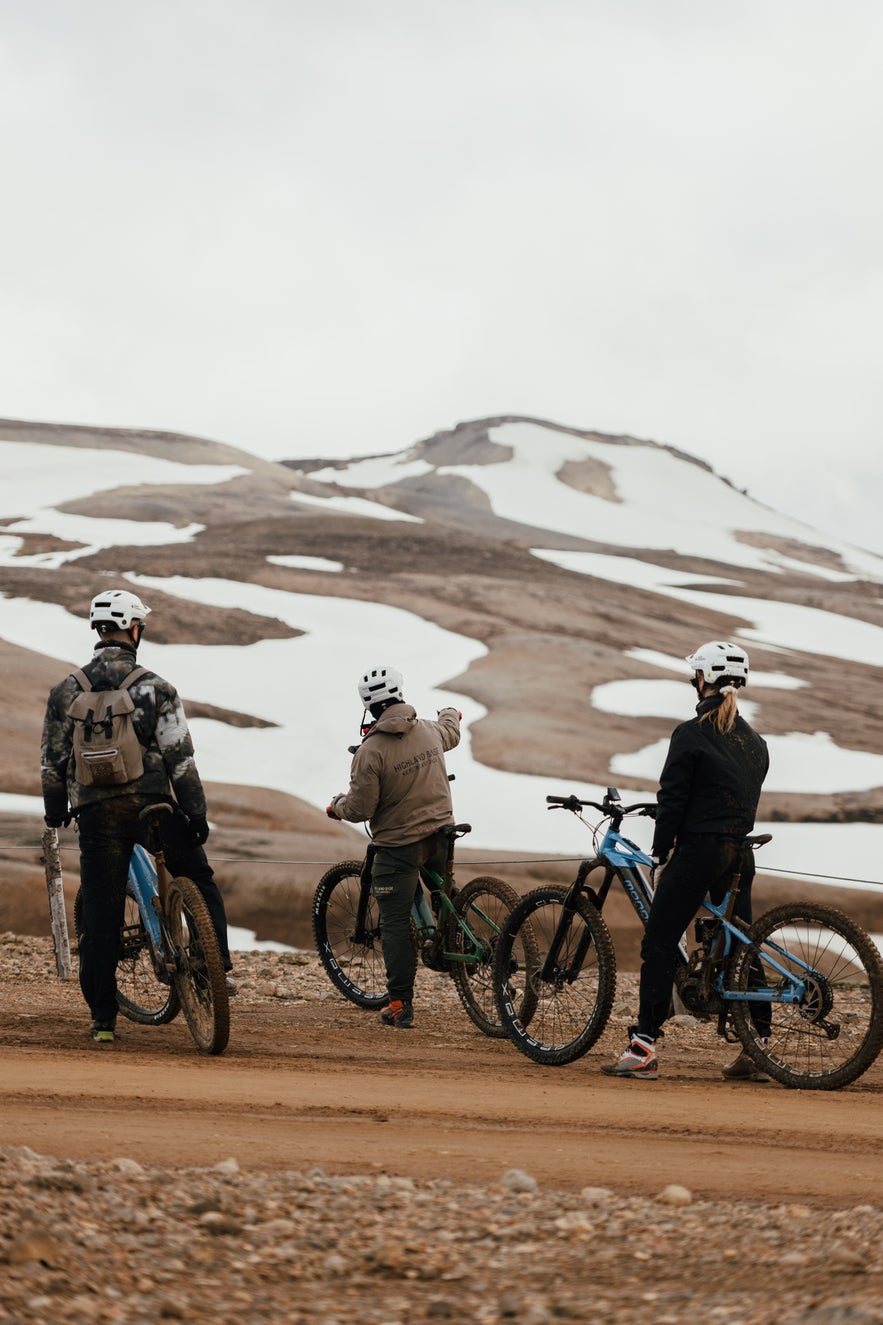
When is the best time to cycle in Iceland?
The best time to cycle in Iceland is from late June to August, when the weather is mild and the days are long.
Is it legal and safe to cycle in Iceland?
Yes, cycling is legal and generally safe. Stick to marked roads and trails, wear a helmet, and be cautious of narrow roads and changing weather.
What are the best cycling routes in Iceland?
Top routes include the Ring Road, Westfjords Way, and the Kjolur highland route. Reykjavik and Snaefellsnes also offer scenic day rides.
What gear should I bring for cycling in Iceland?
Bring warm, waterproof clothing, lights, a helmet, a durable bike with wide tires, and a basic repair kit.
What challenges should I expect while cycling?
Expect strong winds, rain, gravel roads, and quick weather changes, even in summer. Always check conditions before setting out.
Let Cycling in Iceland Inspire Your Next Trip
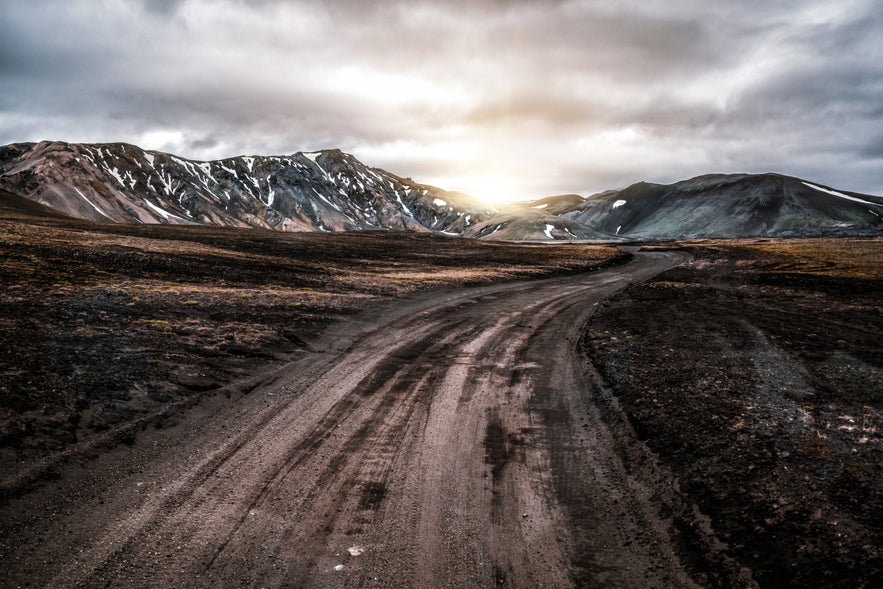 Cycling in Iceland is a challenge and a thrill. From smooth coastal roads to rough Highland tracks, the variety of terrain keeps things exciting. One moment you’re in a quiet village, the next, surrounded by lava fields or riding toward a glacier.
Cycling in Iceland is a challenge and a thrill. From smooth coastal roads to rough Highland tracks, the variety of terrain keeps things exciting. One moment you’re in a quiet village, the next, surrounded by lava fields or riding toward a glacier.
To make the most of it, pick the right season, prepare for all conditions, and know the road rules. Choose a route that excites you and stay flexible, as nature often has its own plans.
Each ride, whether along the Ring Road or through remote Westfjords trails, offers something unforgettable.
The real magic comes in the small moments. A peaceful dip in a hot spring after a long climb. A chat with a local who offers directions or a smile. These memories stick with you more than the miles or the map.
So plan well, ride smart, and embrace the journey. Iceland rewards those who take the road less traveled, one pedal stroke at a time. Gangi þér vel—go well and enjoy the ride!
Got a favorite cycling route in Iceland? Maybe it's a scenic coastal ride or a tough Highland trail. Share your top picks and riding tips in the comment box below!


